|
If you’ve ever wondered how full-time RVers stay healthy and fit while living on the road, this post is for you. Life on the road is not conducive to routine — at least not that we’ve found. Sure, we have routines to a certain extent. We follow checklists for packing the inside of the trailer for travel, connecting the truck to the trailer, and disconnecting the truck from the trailer. And I have a general work routine. What’s harder to set and stick with is a health and fitness routine. How Do RVers Exercise? Some RVers have a Planet Fitness Black Card, which gives them access to Planet Fitness gyms and showers across the country for about $25 a month. Many places we visit are not near a Planet Fitness, and we don’t want to plan our stops based on those locations. Other RVers carry exercise equipment, such as dumbbells and resistance bands, with them as part of their life on the road. Those who have toy haulers can even rely on an all-in-one gym because those rigs are designed to transport more weight than non-toy haulers. Jogging is another option, as is vigorous walking and/or hiking. We try to go for walks wherever we find ourselves. Some locations are more favorable for this than others. We’ve been in places near small, busy roads that limited how far we could venture. We’ve also been in places where we could walk as long as we wanted. We’ve had to be a little creative when it comes to exercise. When we’re stationary in the winter months, we can use the fitness center at the park we stay at for strength training. It gives us something to do together, and we can challenge each other. On the road, we have to make a point to exercise. For many months, I used a free phone app that ran through various exercise routines. I found it quite helpful, but after the end of each six-week or so routine, I had difficulty staying motivated to continue. After a bout of tendinitis, I got out of the habit of using the app. Virtual Reality When we owned sticks and bricks and were raising our kids, we had a Nintendo Wii for many years. We enjoyed how it encouraged us to be active while playing video games. I even used it for a regular fitness routine every morning and stayed in good shape. While visiting friends in Louisiana, we noticed a virtual reality headset sitting on a table and asked about it. Belinda let us try it out, and we were amazed at the immersive experience it provided, transporting us to a different world. Like the Wii, it involved being active to play many games. A quick Google search unveiled that we could purchase a Meta Quest 2 for about $200. (Purchasing from that link will give you and us a credit.) I had expected it to cost much more. Convinced the unit would provide the avenue we wanted for staying healthy and fit — for a small footprint and without adding much weight to our rig — we invested in one for ourselves, along with a game called Beat Saber.
Exercising now is fun. I get a good aerobic workout while slicing through boxes with a lightsaber according to direction arrows and the beat of music. It’s a challenge to hit all the boxes in Beat Saber, and it’s a great stress release after a hectic workday. As with anything, you get out of the experience what you put into it. I take my workouts seriously and am hooked. I guess we’ll be staying in better shape now. You might also like Is RV Life as Glamorous as It Looks?
3 Comments
Farms and crawfish ponds stretch for miles, cultivating a non-rushed pace of life. The appetizing smell of smoked meat wafts through the air. Cypress trees tower over homes and roads, providing a shady respite from intense sunshine and humidity. Birds whistle melodious songs. Turtles ditch the warmth of their log perches with a kerplunk into the water as footsteps near. These are some of the sights, sounds, and smells of the South we grew to appreciate and delight in after two weeks of immersion in Cajun country while visiting our friends Dwaine and Belinda in Ville Platte, Louisiana. Ville Platte is a unique place known as the “Smoked Meat Capital of the World.” It’s also famous for its swamp pop music and even features a museum dedicated to this rare genre, which combines country and western, rhythm and blues, and French Louisiana influences. Perhaps most noteworthy, though, is the town’s special holiday celebrated on the first Friday of October. The whole town shuts down to commemorate Squirrel Day and the start of hunting season. Most men head to the woods to spend the weekend hunting, leaving most of the women behind to enjoy shopping and girl time. Food Focus As indicated by the importance of Squirrel Day, food is a focal point in this region. It typically centers on rice and gravy, which isn’t as plain as it sounds. It involves hours of browning meat, scraping up the stuck-on bits, adding water to deglaze the pan, reducing, and then repeating the process over and over. Not only does it create a delicious gravy, but it also tenderizes any meat. The meat, often smoked, is usually tasso (smoked pork), sausage, shrimp, chicken, or steak — or a combination. No Cajun dish is complete without seasoning, which varies per cook but always includes cayenne pepper. Belinda uses about 80% cayenne pepper along with garlic powder, onion powder, smoked paprika, and white pepper. The people in Louisiana love their red pepper. You’ll even find it on pickles. We grew a taste for its flavor and steady heat. We also sampled cracklins and literal pigtails, which were kind of like chicken wings. Another staple in Cajun cooking, besides gumbo, is boudin (pronounced boo-dan — but with a soft “n”). It looks a bit like sausage but is not sausage at all. Somewhat akin to pasties in the North, it typically comprises pork, rice, and seasonings in sausage casings. This steamed all-in-one meal is enjoyed for breakfast, lunch, supper, or a snack. Crawfish Boil Crawfish boils, common in the region when the critters are in season, provide a great reason to get together. While the live creatures undergo a running water bath by hose, corn cobs and potatoes — and sometimes other vegetables and hot dogs — are thrown into the boiling pot as an appetizer. After the veggies are cooked and shared, crawfish are transitioned to the boiling pot, and seasoning — including the all-important cayenne pepper — is added. When the crustaceans are cooked, they’re moved to a large insulated cooler to keep them warm. Eating the feast is an experience in itself. It involves gathering around a partitioned table with a big hole in the middle to provide easy access to a trash barrel for collecting discarded shells. A huge scoop holding about five pounds is used to transport crawfish from the cooler to one of the table partitions, and a messy adventure ensues. Some people wear gloves while breaking apart and eating crawfish, and for good reason. The spices and wetness from the boil can turn fingers orange while trying to get the tail meat out, and the sharp shells can cut into skin. We opted not to use gloves and dove right in, reveling in the deliciousness despite the mess and effects on our hands. Southern Hospitality
The South has a wonderful reputation for its generous hospitality, which adds to the welcoming, laid-back atmosphere of the region. Unlike in the big city we spent 24 years in, the people in Central Louisiana don’t tend to be in a hurry. They take time to stop their grocery shopping and errand-running to catch up with a familiar — or not so familiar, in our case — face. People enjoy getting together, visiting, and celebrating life. Despite their funny talking (omitting “are,” as in, “You welcome,” for example), they’re authentic and openhearted. We were blessed to participate in three get-togethers while in town. Each gathering centered on a delicious meal and plentiful opportunities to hear from others, share about our experiences, and learn from one another. Although the people had just met us, they genuinely cared about us and welcomed us back with open arms the next time we happen to pass through. Our lives are richer for having spent two weeks in Cajun country. You might also like Farm Living in Michigan. This post includes paid links. As Amazon associates, we may earn from qualifying purchases. RVing comes in many forms: class A or C motorhomes, class B campervans, schoolies, travel trailers, and fifth wheels. When converting to full-time RV living, we opted for a fifth wheel so that we’d have only one engine to maintain: that of our Dodge Ram 3500 dually, Gulliver. Five years later, we’re still thrilled with our decision. In five travel seasons, we’ve found six items to be essentials for fifth-wheel towing. 1. Tire Pressure Monitoring System The most important item for our success on the road is undoubtedly a tire pressure monitoring system (TPMS). We use the EezTire TPMS. It’s more than paid for itself by saving our coach from major damage, especially the year we had four flat tires. If a trailer tire blows out without a TPMS, it can destroy itself and part of the rig before the driver is even aware. Our 42-foot, 17,000-pound fifth wheel, named Tagalong, originally came with E-rated tires, which were at the far edge of that weight limit. Before traveling to Alaska, we upgraded to G-rated tires and haven’t encountered any flats since. We continue to use our TPMS for peace of mind. 2. Curt Fifth-Wheel Hitch Since we live in our fifth wheel full time, we wanted a hitch that would provide as smooth of a ride as possible for our home and its contents. The Curt 16047 Q24 fifth-wheel hitch fits that bill. It pivots and moves during travel to act as kind of a shock absorber for our trailer. Operation of the pull-handle hitch is easy. It features green, yellow, and red indicators when coupling to let us know if the trailer is correctly connected or not. We also got a Curt fifth-wheel hitch lube plate to keep the hitch operating well without a greasy mess. 3. Transmission Pan Upgrade Because we tow a heavy load, our truck’s transmission works over time. A hotter transmission means a shorter transmission life, so the cooler we can keep it, the better. Bob removed the stock transmission pan and installed an after-market pan that’s deeper, has a greater capacity, and includes cooling fins. It holds three to four more quarts of fluid than the factory-installed one. The additional fluid takes longer to heat, which means our transmission doesn’t get as hot as it would otherwise. 4. RV Bottle Jack Lifting our heavy rig can be a scary endeavor. Ensuring our safety is paramount. The year we had four flat tires, we quickly learned how inferior our original bottle jack was. We upgraded to the Safe Jack 6-ton RV bottle jack and feel much safer every time we use it. The jack is designed for RVs weighing up to 24,000 pounds and includes stackable jack extensions with a range of 8 to 36 inches for just the right fit. 5. Grease Gun Carrying a grease gun can be a messy endeavor. That’s a risk we’re willing to take to ensure our fifth wheel hitch, wheel bearings, and suspension stay lubed and working properly. We have a lot riding on these things, so we want them to operate optimally. Without keeping the zerk fittings on these items greased, we could end up with metal-on-metal grinding, which would drastically reduce their life and limit our livelihood. 6. Breaker Bar and Torque Wrench Proper torque is vital to keeping any tire on a vehicle. It’s crucial when towing 18,000 pounds. Torque that’s too loose can provide opportunity for lug nuts to back off a tire over time. Over-tightened torque can stretch the lugs. We carry a torque wrench with us to ensure correct tightness of the lug nuts on both our truck and trailer. We also tote a breaker bar. As its name implies, a breaker bar is designed to break heavy torque when needed, such as on the lug nuts of a fifth wheel so we can remove a tire. In addition to those items, we’re thankful for some nonessentials that are nice to have, including:
You might also like Our Favorite Phone Apps for RVing. With an area spanning more than 268,000 square miles, the state of Texas has a great deal to offer, from large metropolises to small towns to expansive ranches to large roadside attractions. We could probably spend a whole year traversing the state and still have more to see. Although we didn’t come across anything as big as the world’s largest pistachio while hanging out near Lubbock in Western Texas, we did find a few hidden gems worth sharing. Free City Parks When Texas entered the Union in 1845, it did so under an agreement that allowed the state to keep its public lands rather than turning them over to the federal government. As a result, boondocking options on Bureau of Land Management or forest service land in Texas are largely nonexistent, although the 28th state does house 89 state parks, according to the Texas Parks and Wildlife Department. In addition, many of the state’s cities offer free RV parks that include electricity, water, and dump stations. Most of these have a three- to four-night limit. The idea is that by offering free stays to RVers, the cities will reap the benefits of those RVers touring their vicinities and adding to their economies. We tend to do that wherever we stay, so to us these parks were a win-win. Walk of Fame You’ve likely heard of the Hollywood Walk of Fame, known for engraved stars in the sidewalk to commemorate popular celebrities. But did you know Lubbock also has a Walk of Fame? Rather than stars in the sidewalk, however, this one features plaques on a wall to honor musicians from the area. The major draw to the West Texas Walk of Fame is a statue of Buddy Holly, Lubbock’s rock ‘n’ roll pioneer who opened for Elvis Presley and caught the world by storm before his untimely death at age 22. His legacy lives on in the city with the Buddy Holly Center, Buddy Holly House, Buddy Holly Gravesite, and more. Prairie Dog Town Prairie dogs are fun creatures to watch, with their extreme stillness while on lookout and their twitchiness when off guard duty. When we learned Lubbock featured a Prairie Dog Town, we had to check it out.
The dedicated space for the squirrel relatives got its start in 1935 when a man named K.N. Clapp wanted to do something to preserve the black-tailed prairie dog from extinction by the government’s poisoning program. The animal town began with four rodents and two burrows, with Clapp named the mayor of Prairie Dog Town in perpetuity. Over the years, the creatures multiplied, as did their burrows. We spent about an hour at the attraction, although we almost left pretty rapidly after not seeing any obvious signs of life. While observing the broad field from the cab of the truck, however, Bob noticed movement out in the distance. I left the truck to drop some trash in a wastecan and saw a prairie dog standing at attention outside the fence of the official enclosure. As I stood and watched, birds encroached on the creature, which held its ground, undeterred. The birds moved on, and the prairie dog went off duty, moving to another burrow. But it was fun to watch while the show lasted. These are just a few hidden gems we happened upon while visiting West Texas. Another trip another time will undoubtedly reveal more. Meanwhile, we adventure on, in anticipation of what lies ahead. You might also like Exploring Valley of Fire State Park in Nevada. We had plotted to head east for our 2024 travels, unaware of the upcoming solar eclipse. When we discovered we’d be in Texas at the scheduled time of this rare phenomenon, we made plans to spend the week on its route. When the moon passes between Earth and the sun, it forms an eclipse, with the path of totality varying greatly. Seven years ago, in 2017, Americans had the opportunity to witness this event, with prime visibility stretching from Salem, Oregon, to Charleston, South Carolina. That was the first time for such an occurrence in the U.S. since 1979, when only five states were privy to totality. The 2024 solar eclipse extended viewing opportunities to numerous Americans, from Texas to Maine, for a chance to witness a total eclipse of the sun. Watching and Waiting The weather forecast in our location near Paris, Texas, called for clouds the day of the eclipse, so we weren’t sure what to expect. Would we be able to see the sensation? We gathered with a handful of fellow campers on a grassy knoll under a largely cloud-covered sky, solar glasses in hand, for our chance to view this wonder. As the clouds slowly moved, we caught glimpses of the disappearing sun through breaks in their cover — no glasses needed. The moon’s passing in front of the sun converted the orb to an arc. An occasional clear patch of sky emerged, allowing the brightness of the small sliver to penetrate through, forcing us to don our eyewear, which blocked everything but the yellow arc. As the moon obstructed more and more of the sun, sand bass in a nearby lake jumped as if it was evening, their activity increasing in the rare low light of midday. Birds hushed. The temperature dropped, making me grateful I had brought my sweatshirt. Light dissipated, and everything turned gray. Viewing Totality Then our surroundings grew darker. The clouds vanished to showcase this anomaly of the moon completely blocking the sun from sight. A “ring of fire,” visible by the naked human eye, replaced the sun’s bright beam, its rays peeking out from behind the smaller moon. About four minutes later, a small red light materialized on one side of the halo, a sun ray poking through with the appearance of a diamond ring. Shortly thereafter, we had to put on our special glasses again if we wanted to continue looking at the growing crescent on the opposite side of where we had seen it before. Darkness evaporated, birds started singing, fish stilled, and the temperature warmed. The moon continued moving away from the sun, and life as we know it returned to normal.
I remember seeing a partial eclipse in Arizona in 2017 by watching the sun’s shadow through a pinhole in a shoebox. Although cool, that paled in comparison to witnessing a total eclipse. We’re thankful we had the opportunity to observe this unique display and to do so in the company of fellow RVers. Life is good, and we are blessed. You might also like Experiencing the Wonder of the Northern Lights. Alamogordo, New Mexico, may not sound like a destination. What drew us to the obscurely named city (meaning “fat cottonwood”) of just over 31,000 was its reputation for white sands: White Sands National Park and White Sands Missile Range. The city’s military history dates back to WWII and includes the gathering of more than 1,600 German scientists, technicians, and engineers after the war to advance rocketry, medicine, synthetic fuels, and other research. Today, missile testing still closes U.S. Highway 70. Although we didn’t see a missile launch from White Sands, we did see a Starlink rocket ascend while camped in the desert west of Phoenix. After spending a week living off-grid in Alamogordo, we found ourselves amazed at the abundant things the vicinity offers: the Southwest’s oldest zoo, myriad chain restaurants and hotels, unique experiences, and expansive mountain views. Our schedule didn’t allow for us to explore the White Sands Missile Range Museum, but we did find three adventurous things to do in Alamogordo: 1. Sand Sledding By far my favorite thing we did in the area was sledding down sand dunes at White Sands National Park. The white sand, visible from space, is made from gypsum, which is the key ingredient in sheetrock and plaster. You can purchase a round sled and a block of wax at the visitor center gift shop and head out on the 8-mile Dunes Drive, stopping wherever you like to ascend a dune and sled down it — without getting cold. If a sled trail hasn’t been made, the first run can be a bit slow. We found the best success by waxing the bottom of the sled after every run or two to make the descent a thrill. The National Park Service app says there are three sledding areas of varying levels: beginner, intermediate, and experienced. We climbed an intermediate dune for our first run, amazed at the firmness of the sand under our feet, perhaps a result of the rain the day before. Although the hill looked awfully steep, one run down made it clear we needed that pitch to get enough speed for a smooth slide. After a few times of trudging up the dune and sledding down, we loaded back into Gulliver and drove to the steeper, experienced-level dunes, finding them exhilarating. We left with smiles plastered to our faces and somehow managed to avoid getting sand inside our shoes. 2. Exhibit Exploring Alamogordo offers numerous museums to honor its railway and military history. The New Mexico Museum of Space History is well worth the $8 admission. It chronicles the progression of space and missile science in New Mexico, plus a whole lot more. A tour through the five-level facility starts on the fifth floor, leading visitors down through varying exhibits. One level is devoted to space science in New Mexico, including a commemoration to John P. Stapp, “the fastest man on Earth.” He sustained 46.2 Gs when testing the effects of gravity during deceleration while stationed at Holloman Air Force Base in Alamogordo. Another museum floor is dedicated to living and working in space. One is focused on rockets and missiles. We found the level about science fiction fascinating. Its placards discussed how many of the ideas in science fiction have become reality. The last level is an interactive one. But hands-on exhibits and photo ops are available throughout, including a flight simulator to land a space shuttle and a mock “Beam me up, Scotty” transporter, as seen on “Star Trek.” After about four hours, we found ourselves in the museum’s gift shop. If the weather had been cooperative, we would have stayed longer to explore the outdoor exhibits. 3. Nut Noshing No visit to Alamogordo would be complete without a trip to PistachioLand, home of the world’s largest pistachio. Besides photo ops, the unique attraction features pistachio and wine tasting, nutty gifts, fudge and ice cream made on the premises, and farm tours for only $3 per person (at the time of this writing).
The 30-foot towering pistachio at the entrance to the locale was erected in 2007 to honor the late Tom McGinn, who owned and ran the ranch and first introduced pistachio farming to southern New Mexico. On the tour through a portion of the farm’s 125 acres, we learned how pistachio trees had to be grafted into native trunks from the Middle East in order to survive against southwestern America’s harsh environmental conditions. Most U.S.-grown pistachios (97%) come from California. The other 3% come from Arizona and New Mexico. PistachioLand offers a variety of flavored nuts, all salted and roasted on the ranch, from lemon lime to cinnamon to garlic to green chile. There’s something for everyone. We left with a bag of red chile-flavored pistachios and a cone of pistachio ice cream, thankful for the experience that reminded us of the Corn Palace in Mitchell, South Dakota. You might also like 3 Cool Things to Do in Yuma, Arizona. When you think of camping in an RV, you may picture luxury: electric-powered lights and television, running water, and a flushable toilet. At campgrounds that offer full hookups, those things are realities. Boondocking, or dry camping, however, means sacrificing those luxuries. Or does it? Without shore power electricity, you can camp as if tent camping, reading and participating in outdoor activities rather than watching TV or using a laptop, and relying on solar-powered lamps after the sun goes down. But those aren’t your only options. If you’ve ever wondered what it’s like to live off-grid in an RV, we’re happy to share about our experiences doing so. Powering Up and Topping Off Thanks to the 10 solar panels on our fifth wheel roof (six 160-watt and four 100-watt), we typically get enough energy to keep our three 170-amp-hour batteries charged to power everything we want to operate. That includes my work laptop, dual monitors, office light, Bob’s computer, our TV, digital picture frame, and Google Home — and even charge our phones. We rely on propane to run our refrigerator, water heater, space heater, stove, and oven. Our rig has designated holding spaces for three 7-gallon/30-pound propane tanks, which provides plenty of fuel for a week or two off-grid. We limit microwave use, instead opting to heat water, coffee, soup, and leftovers on the stove. For water to make coffee and meals, clean dishes, brush our teeth, flush the toilet, shower, and drink, we have to find a potable source to fill our 75-gallon freshwater tank. We prefer to do this near our camping destination at a gas station, campground, or dump station rather than hauling the liquid long distances, which can affect fuel efficiency and put unnecessary strain on Gulliver and Tagalong. We tend to stock up on groceries, prescriptions, and other supplies before going boondocking. That way, we can stay longer, which saves on fuel. Finding Warmth on Cold Mornings On cold workday mornings, I get out of bed and, clad in a fluffy robe and slippers, descend our three steps to turn on our portable propane heater in the living room. The portable heater is more energy-efficient than our onboard propane heater, which uses electricity to start the motor. After that, I open my office door to try to get some warmth in there and then roll up window shades. Most of our windows include two shades: privacy and blackout. We pull down both after the sun sets to help keep cold air out. Opening the shades in the mornings lets sunshine in for natural heat. Then I check our VictronConnect phone app to get a read on our batteries’ state of charge. If it registers 75% to 80% and the weather forecast calls for a sunny day, I know I can run my little electric room heater in my office without too much dent on our battery life. If, however, the reading is closer to 50%, I need to conserve as much energy as possible. That means starting my workday in the warmth of bed or in the living room near the heater using my laptop disconnected from a power source and from my wall-mounted dual monitors. When my tummy starts rumbling, I heat water on the stove to brew coffee in our 50-ounce French press and make a bowl of oatmeal. “What about Bob?” you may be wondering. He stays in bed reading the news and then has a light breakfast on his own. On rare occasions of multiple cloudy days, Bob starts one of our two propane-powered generators to charge our batteries up to 100%. Dealing with Waste With no garbage pickup off-grid, we have to remember to take our trash with us to deposit in a public wastecan anytime we venture into town. We also have to be mindful of the liquid that goes down our sink and shower drains. Our fifth wheel has a capacity of 85 gallons of this gray water, which tends to add up fast — even with turning off the faucet between lathering and rinsing when taking a shower. Wastewater also comes in the form of black water, or toilet water. Our rig has a 50-gallon capacity for this. Our gray and black water tanks usually last for a couple of weeks before we need to empty them. If we plan to boondock longer than that and don’t want to hook up the truck and trailer to haul to a dump station, we have to find a way to dispose of their contents. Some RVers carry a macerator and portable wastewater tank for this purpose. We don’t have either of those, so we try to take advantage of public restrooms when away from our RV and be vigilant and sparing when using water from our faucets. Enjoying Nature By camping off-grid, we’re able to get our rig into scenic areas we otherwise wouldn’t, such as in the shadow of a towering mountain, atop a butte overlooking a city, or near a rushing river or expansive lake. We like to take daily walks in nature to get exercise and admire wildflowers, desert flora, and varying terrain — and creatures big and small in their natural habitat when we happen upon them. Getting out of our rig also allows us to meet other RVers and exchange stories.
Being in nature isn’t always all it’s cracked up to be, however. It often comes with windy conditions, the price we pay for the beautiful surroundings. We’ve learned to accept that as part of the experience. Despite that aspect, we’ll continue to take advantage of the boondocking opportunities that come our way. You might also like 7 Best Boondocking Hacks. It seemed like a good idea. We dropped off Tagalong in the middle of the desert west of Phoenix, closed up and secure and surrounded by fellow Xscapers. Then we took Gulliver to Yuma to visit my parents. What could go wrong? We knew our rig was in good shape after all the attention we had given it in the past six weeks, so we didn’t expect any issues. Does any RVer in such a situation? Bob’s phone rang at 10:30 p.m. five days into our getaway. His full-time RVer brother, Tom, had called to notify us of a disturbance in the desert: a loud beeping emanating from the Pinnacle (our rig) that could be heard inside a nearby RV above the sound of rain. Suddenly wide awake two hours from our home on wheels, we had to get to the bottom of this. In Search of the Cause Bob and I talked through the possible sources of a beep inside our rig and narrowed it down to three: the smoke detector, the refrigerator (if out of propane), and the carbon monoxide detector. We gave Tom the keycode to get inside our rig. As soon as he opened the door, we heard the loud din through the phone. It wasn’t a steady beep, which eliminated the refrigerator possibility. That left two others. Opening our dining room slide, Tom noticed blinking red and green lights on our carbon monoxide detector. As he got closer, he discovered the code meant our CO detector had reached the end of its life. Great! At that hour, no place was open to get a replacement. Even if a place had been open, it would have taken us a minimum of 2.5 hours before we could get back with a new unit. A Temporary Fix Bob and I both searched the internet for a way to deactivate the alarm. Bob found a button combination that would buy us 72 hours — and could be repeated up to 10 times. Tom performed the button operation, and silence returned. We didn’t have to hit the road that night after all. Having to work the next morning, I dozed off while Bob scoured Amazon for a replacement unit. Based on a review by the owner of a 2018 Jayco North Point fifth wheel (the sister of our rig), he ordered a Briidea carbon monoxide detector (paid link) to arrive two days later at my parents’, the date we planned to return to Tagalong. At the mercy of the package deliverer before we could travel, we were able to enjoy some game playing with my parents to pass the time. The unit finally arrived at 3:15 p.m., and we were free to hit the road, allowing us to return before sundown. Out with the Old, In with the New The next day, Bob gathered his tools, got comfortable on the floor of our coach, and went to work to remove the faulty unit. With that out of the way, he connected the wires to the new unit and put it in place, a quick and easy process. The original unit that came with our trailer and the new one detect both carbon monoxide and propane. The factory-installed one, however, only had one light indicator, leaving us to guess the problem if an alarm sounded. The new one has two light indicators for clarity and greater peace of mind.
We’re thankful for the fellow Xscaper who noticed the chirping coming from our rig and said something about it. And we’re especially grateful Tom was nearby to call us and help with a temporary fix until we could provide a more permanent solution. The RV community is a friendly one. We’re glad to be part of it. You might also like When Things Go Wrong in RV Life. As with any home, RVs require maintenance — even if they’re not driveable. We live in a fifth wheel: Tagalong. Although it has no motor, things still break or need attention from time to time. When you travel regularly, proper RV maintenance becomes a priority. Otherwise, the issues that arise could quickly exacerbate as a result of the mini earthquakes experienced during transit. Nearing the end of a long-term RV stay, we knew we needed to take care of some problems. Every year, it seems, we have to deal with broken window shades. Sometimes they get stuck open. Other times, they stop rolling up or down. We’ve learned how to replace the springs that control the movement, but removing the shades from — and, even worse, reinstalling them on — the walls is no easy feat. Still, the job had to be done. Here are some other maintenance tasks we’ve had to tend to. Shine Restoration We bought our fifth wheel in Mesa, Arizona, in June 2019. With no place to store it, the dealership agreed to keep the rig on its lot for six months. That worked well for us, but the Arizona sun and heat took their toll. Fast-forward just a few years, and we found ourselves wanting to address the dullness of Tagalong’s exterior to extend the life of our rig before it was too late. So, we booked a wash-and-wax job. Three workers showed up at our home and walked around the rig, assessing the job ahead of them. After their evaluation, the foreman explained that the clear coat protection on the rig had eroded. A wash-and-wax job alone would not restore it, he said. Tagalong needed something more intense: oxidation remover. Since we don’t have to paint the exterior of our RV home every few years like we did our sticks and bricks, this seemed like a necessary equivalent. We decided to invest in the added protectant to restore Tagalong’s luster — for nearly double the price we had planned to pay. Four hours later, the men finished the job, eager for us to see the results of their labor. The dullness we had grown accustomed to had been erased, replaced by a shine that made our rig look almost like new. Upholstery Fix Like other RVs built in 2018, our rig came equipped with artificial leather living room furniture. This quickly became an industry problem as the furniture material kept its integrity for only a few years before starting to peel. Because of that, modern RVs come with fabric furniture. When our recliner loveseat began peeling, we bandaged it with brush-on leather repair. That held for about a year before it, too, started to deteriorate. Not wanting to spend hundreds of dollars to replace our loveseat, Bob did some research and discovered self-adhesive leather repair kits in a variety of colors and sizes, available on Amazon. We took some measurements and ordered a roll to cover the material on both headrests, the location of most of the flaking. Working together, we cleaned the furniture, measured and cut the replacement material, and carefully and slowly attached it to the loveseat. Although it’s not a perfect color match, the fix covered beautifully. Thrilled with that success, we ordered a larger roll to blanket the loveseat seats, one of which had started to peel. Requiring larger pieces, that repair job proved a little more challenging. But we pulled it off and salvaged our furniture. Step Renovation The two stairs inside our rig that lead from the main living area to the bathroom and bedroom came covered in a protective plastic. Situated right inside the entry to the rig, the stairs are regularly exposed to sunlight, never mind the day-in, day-out use they’re subjected to. In many areas, the plastic had become brittle and broken. Wanting to prevent a tripping hazard, I decided to rip up all of the plastic protectant down to the particle board. I vacuumed the stairs to remove any dust and debris. Then I taped the edges and painted the stairs with a durable black floor paint with granules in it to prevent slipping. The two-coat restoration lasted for a year. After that time, some of the paint along the edge of each step wore down to wood. A little touch-up paint did the trick to correct the issue and keep the stairs protected and looking nice. Seam Recaulking We’ve had our share of water issues since moving into our RV. Not wanting to face anymore, we keep a close eye on external areas that could be at risk for allowing rain in. When installing new solar panels, we noticed the caulking along one side of the roof had pulled away, likely a result of the sun beating on it. Bob ordered some silicone caulk to fix the issue, but before he could apply it, he had to remove the old silicone. He spent a couple of hours teetering on the edge of the rig, painstakingly peeling the old sealant and rubbing the seam clean. After another hour on his hands and knees to recaulk the seam, he emerged victorious — and sore from all the kneeling. Despite that, we shouldn’t have to worry about rain seeping in.
You might also like A New Type of Camping. Spring cleaning takes on new meaning when you live full time in an RV—especially if you stay in one place for the winter months. It’s easy for items to accumulate and take up precious space in your rig. Without closing and opening RV slideouts, it can seem like there’s more than enough room for both your existing and new belongings. When travel looms, however, RV owners are forced to find homes for things that could be in jeopardy if left out during relocation. This can be a stressful endeavor with space at a premium. Although Bob and I have been full-time RVers for four years, staying stationary for about five months during the winter, we still haven’t mastered the “one-in, one-out” methodology to introducing new items to our fifth wheel. As a result, we end up dedicating one day a year to minimizing our accumulations before hitting the road. Eradicating Extras Admittedly, the purging process has gotten easier. We’ve definitely learned to acquire less than we accumulated after two years of travel. To be fair, though, some of those items were leftovers from our sticks and bricks. We take a structured approach to the eradication process, going through all of our clothing, drawers, and cabinets. But because we start out with less than we originally did, we have a better idea of the extras we’ve gained. That makes paring down easier. Our biggest challenge tends to be finding permanent locations for larger items we obtain, such as a pasta maker, food sealer, and toaster. Protecting a Pasta Maker Removing the pasta maker from its box proved to be a good decision, significantly minimizing its footprint. But we had to be strategic in the placement of the appliance to ensure its safekeeping during transit. I found the optimal spot behind our recliner loveseat. After verifying that the gadget would be out of harm’s way with the recliners both open and closed, I had to determine what to do with the pasta maker’s accessories. Lacking weight, they could get jostled and lost if we stowed them with the machine. I put them in a gallon-size zippered plastic bag and looked around the rig for the ideal location. Bob suggested a kitchen drawer where nothing could slide into them. The solution worked perfectly.
Finding a Home for a Food Sealer Moving on to the food sealer, I came up with a plan to stash it in an out-of-the-way interior corner near our dining table. The device fit there beautifully. But I still had to stow four rolls of plastic wrap for the machine. Examining the interior of our upper rear cabinets, where we had previously found evidence of a mouse invasion, I discovered some empty space in the plastic, lidded bins we had purchased to protect our dry goods from another rodent attack. Moving some things around and removing items we knew we wouldn’t use provided just enough room for all four rolls. Problem solved. Tucking Away a Toaster When we started our RV life, we gave up our toaster, thinking it a fire hazard in an RV. Plus, it consumes a significant amount of electricity when we’re running on batteries. After three years of making “toast” in an iron skillet when we wanted the indulgence, we invested in a used toaster from a thrift store. It weighed little, cost little, and fit well in a deep kitchen drawer. The only problem? It took the in-transit space of our coffee French press and a saucepan we use for boiling water. We had planned to leave the toaster behind before we hit the road, but we had grown to enjoy the occasional delicacy it provided. With travel approaching, we had to find a more permanent solution for housing the appliance. As a general rule, we strategically pack our cabinets and drawers to minimize items shifting during transit. Because of that, we had limited options for our treasured device as most drawers and cabinets lacked space for something its size. But then I had an idea. The shelf in the cabinet under our bathroom sink could work. Sure enough, the toaster fit in that spot. The travel toaster solution may be a bit unconventional, but it allows us to keep the toaster. Once we arrive at a location, we remove our water-boiling saucepan and French press from its kitchen drawer, and the toaster takes up residence there for easy kitchen access. There’s something liberating about having few possessions to weigh us down. Because of that, we’ll continue to set aside time for spring cleaning. It’s well worth it for the freedom it gives us to go where we want, when we want, and spend time with the people we want. You might also like What an RV Travel Day Is Like. |
AuthorThis is the travel blog of full-time RVers Bob and Lana Gates and our truck, Gulliver, and fifth wheel, Tagalong. Categories
All
Archives
July 2024
|



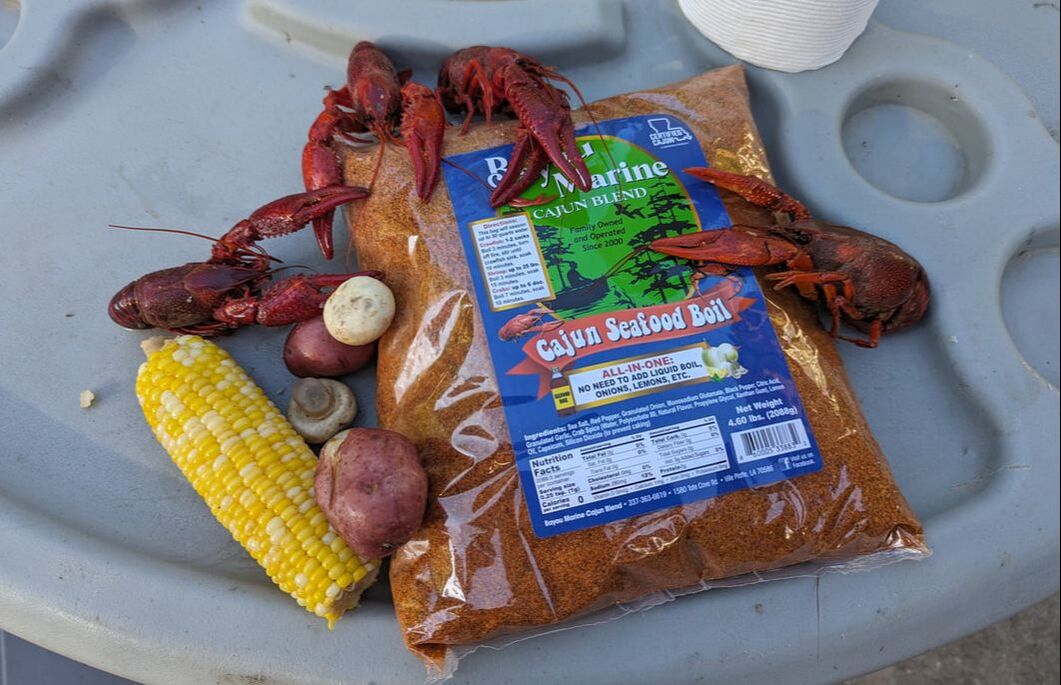

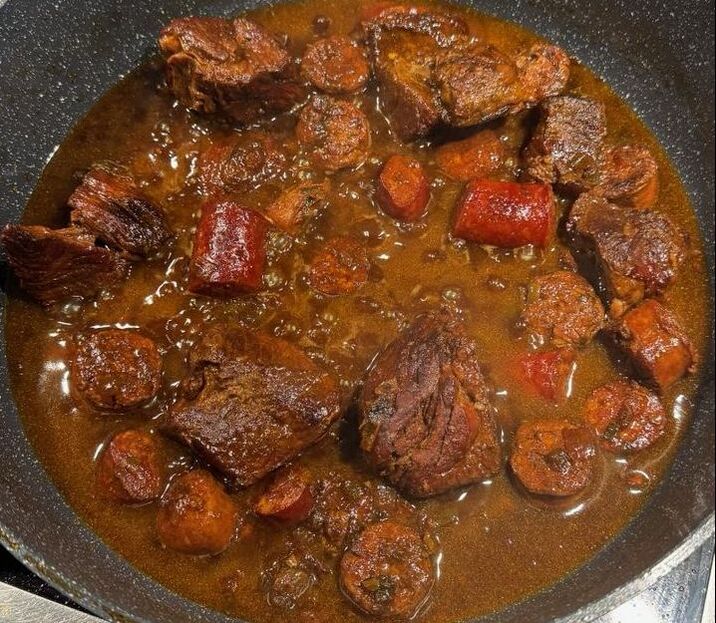

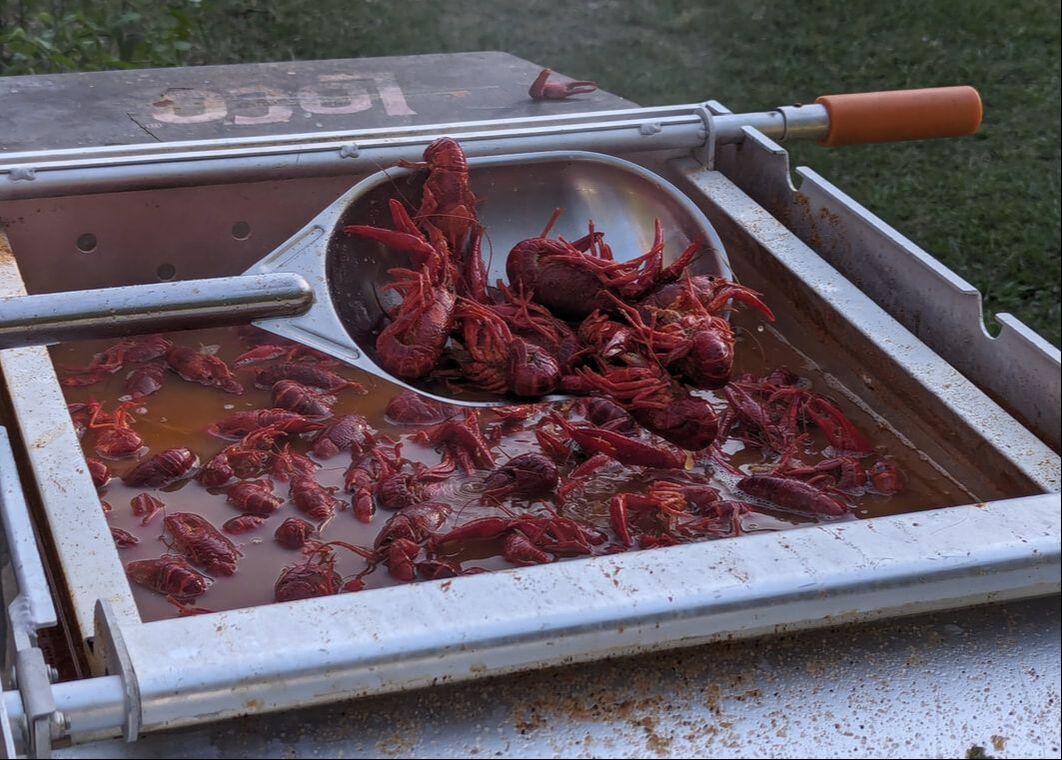
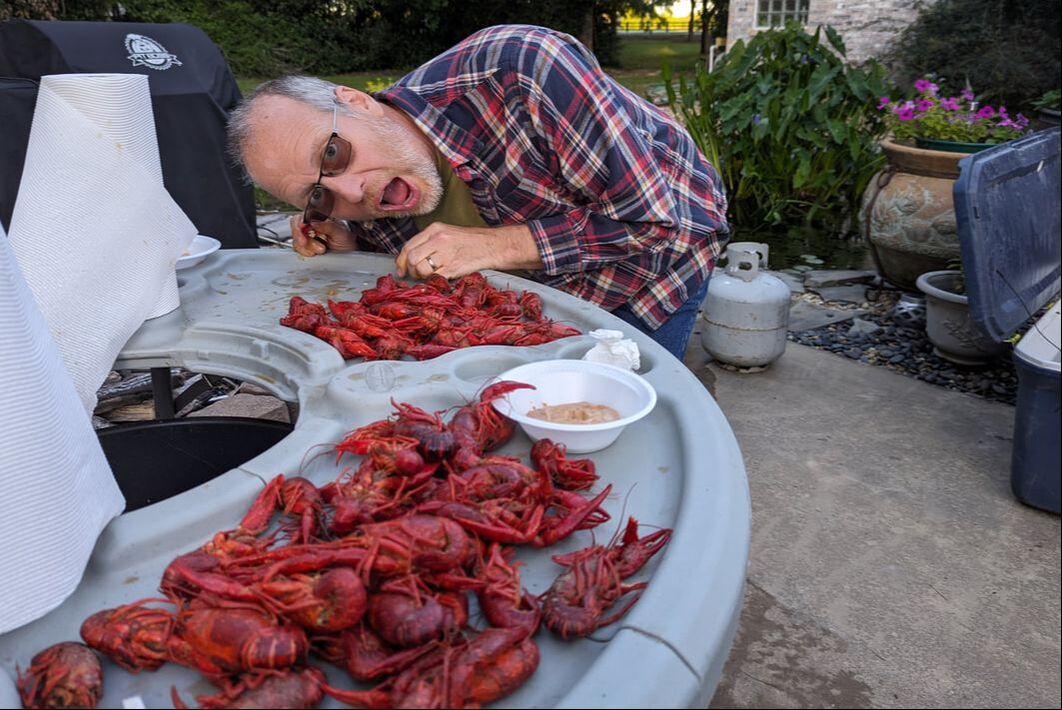
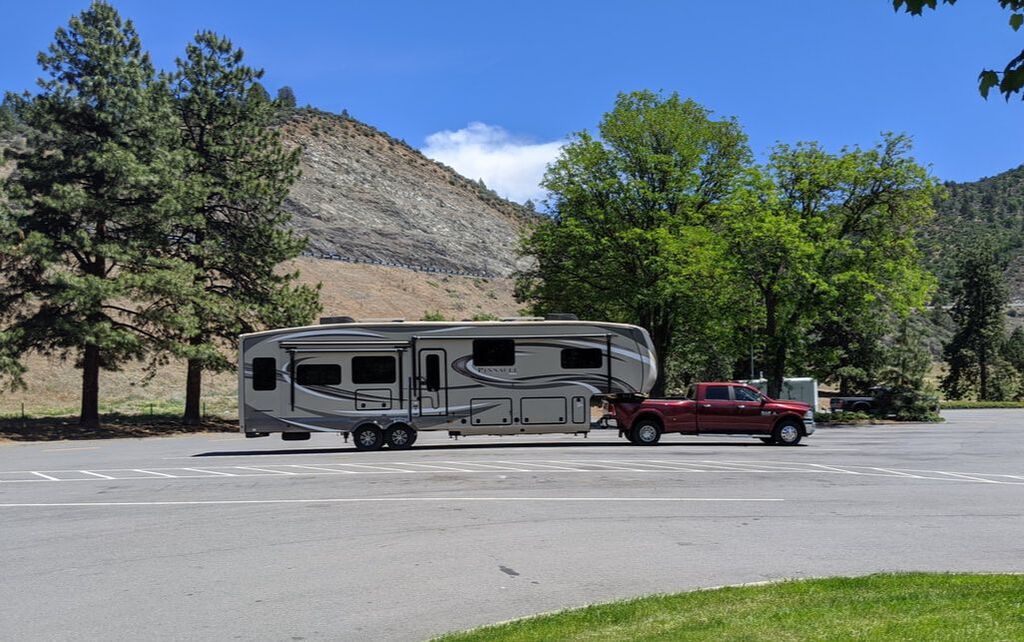
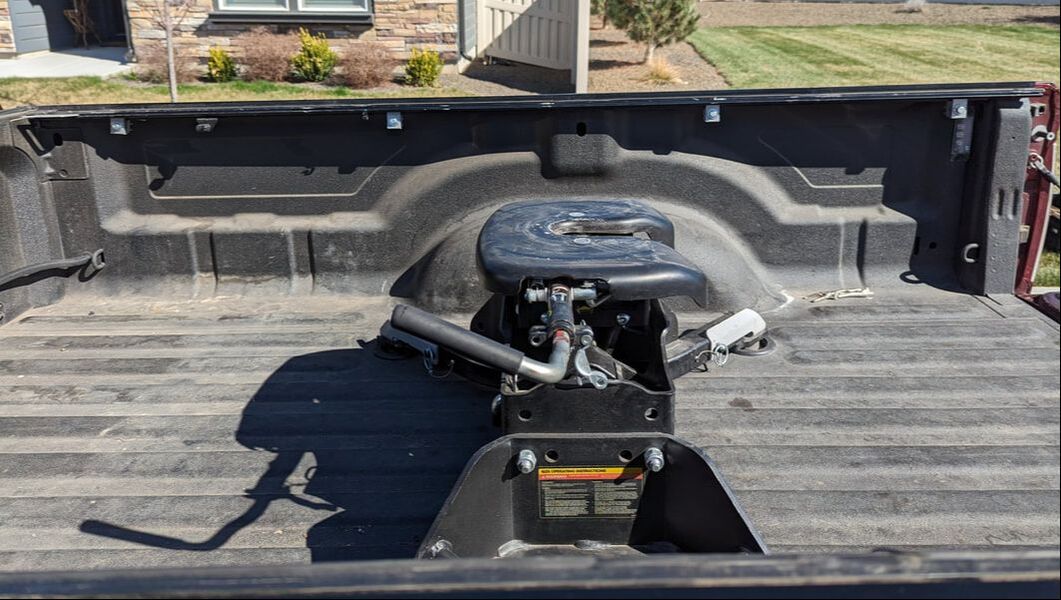
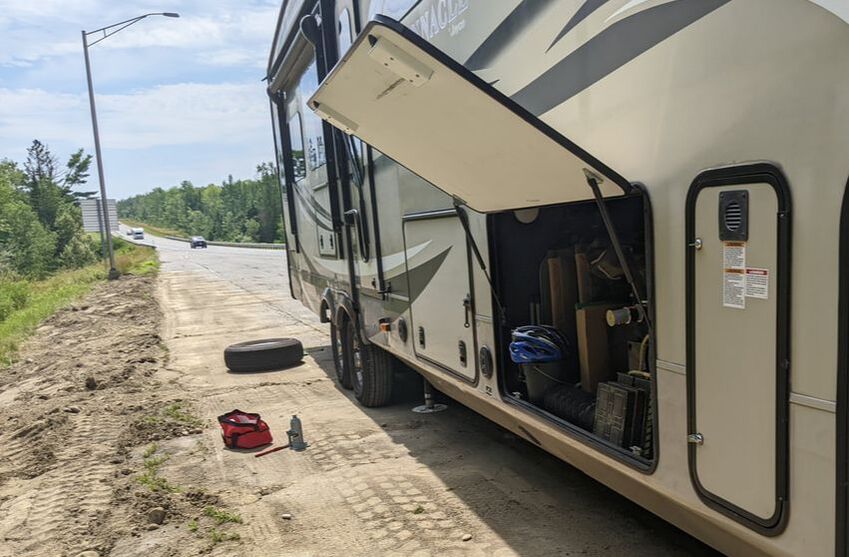
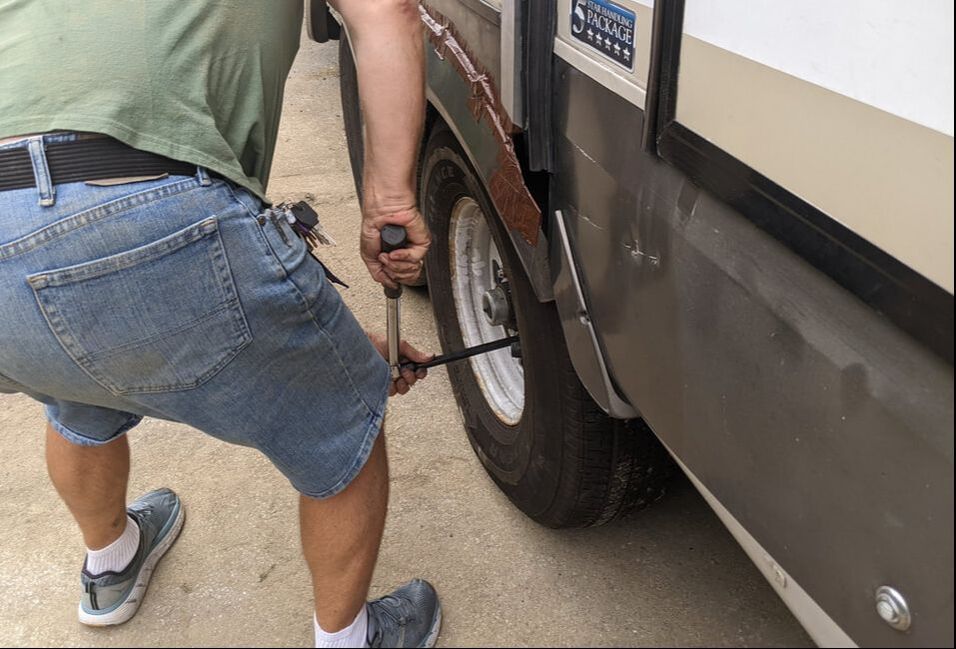
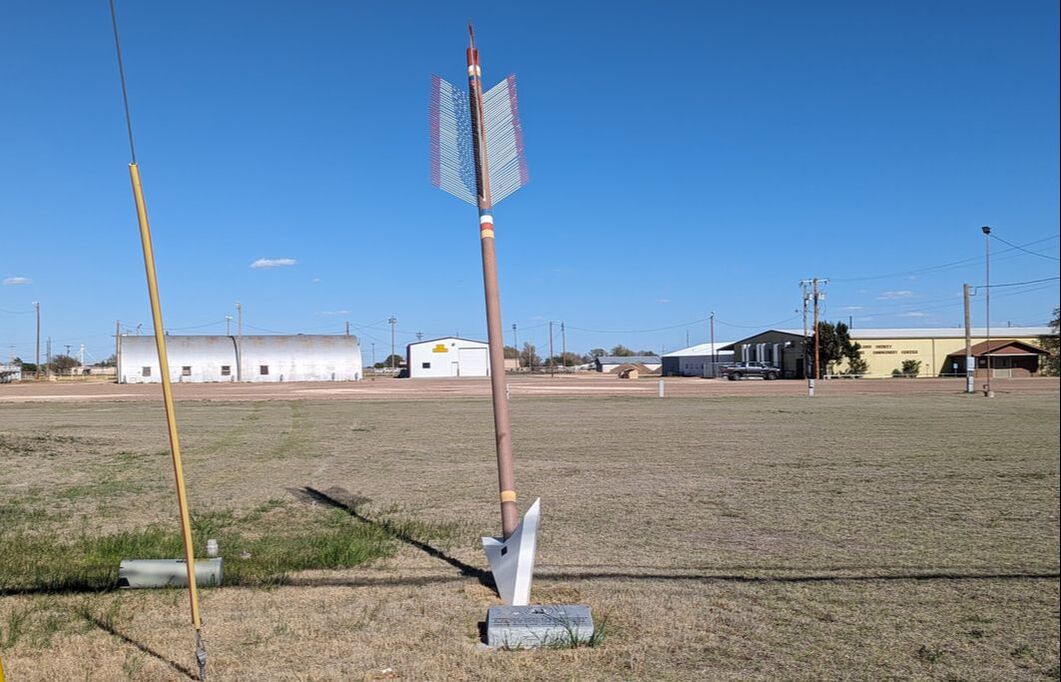
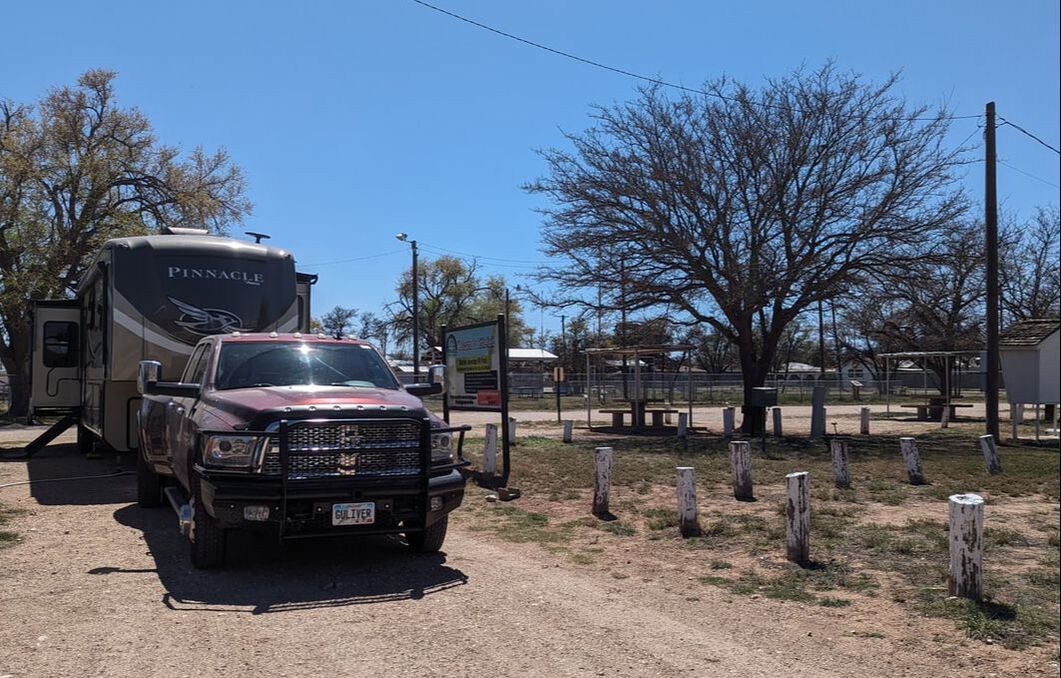
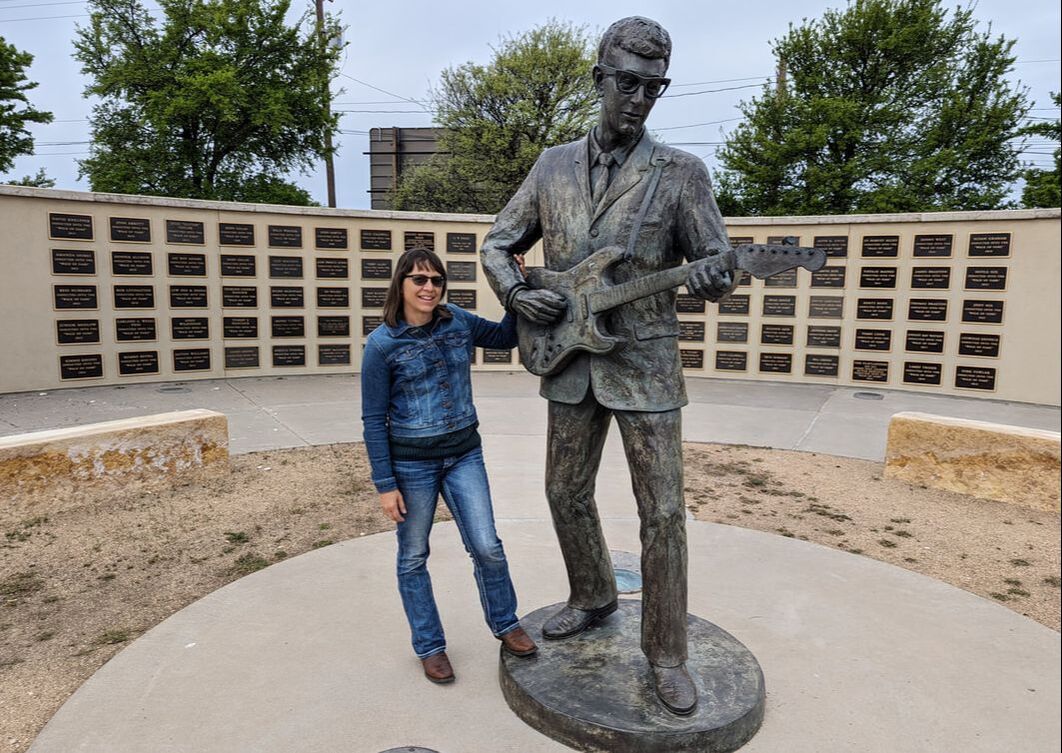
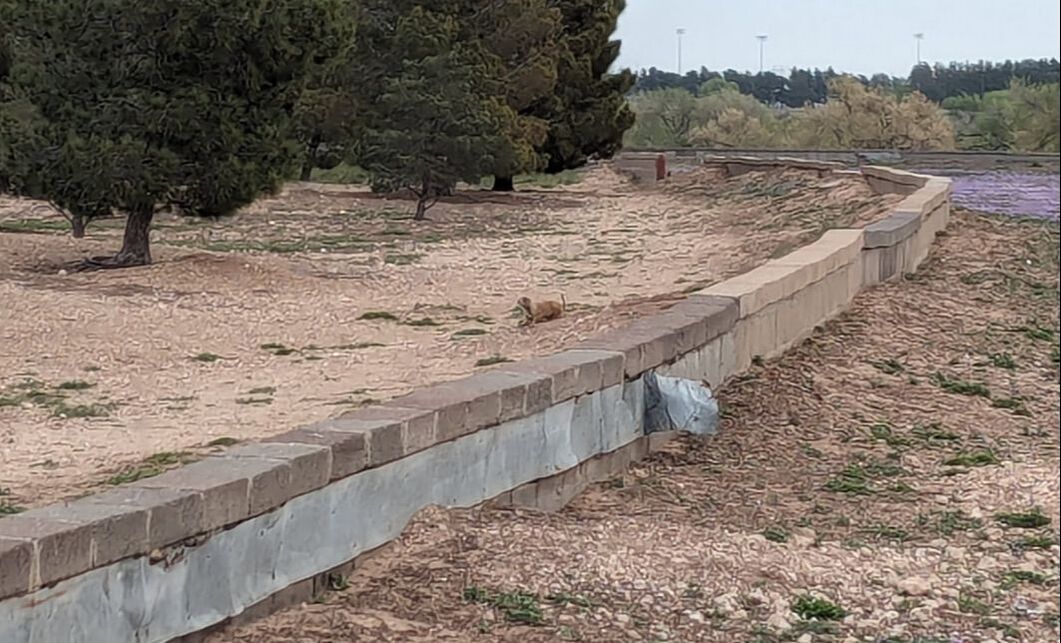

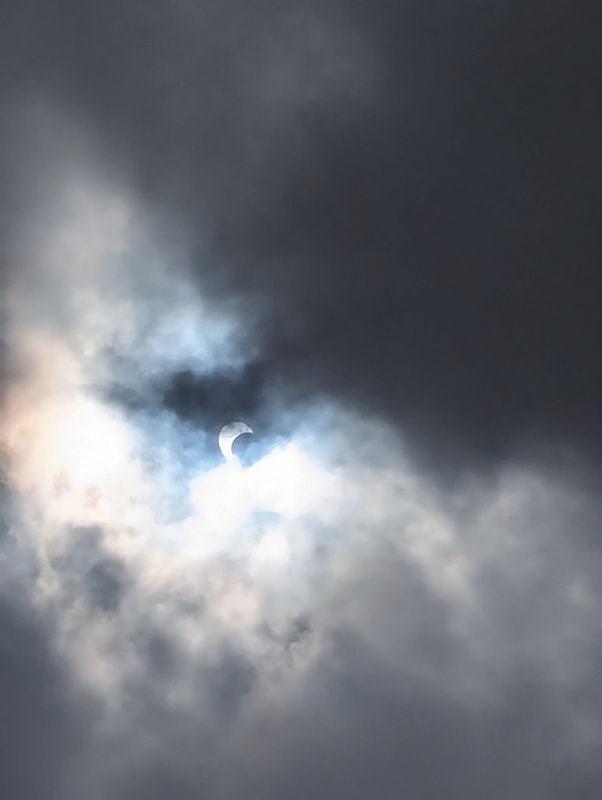
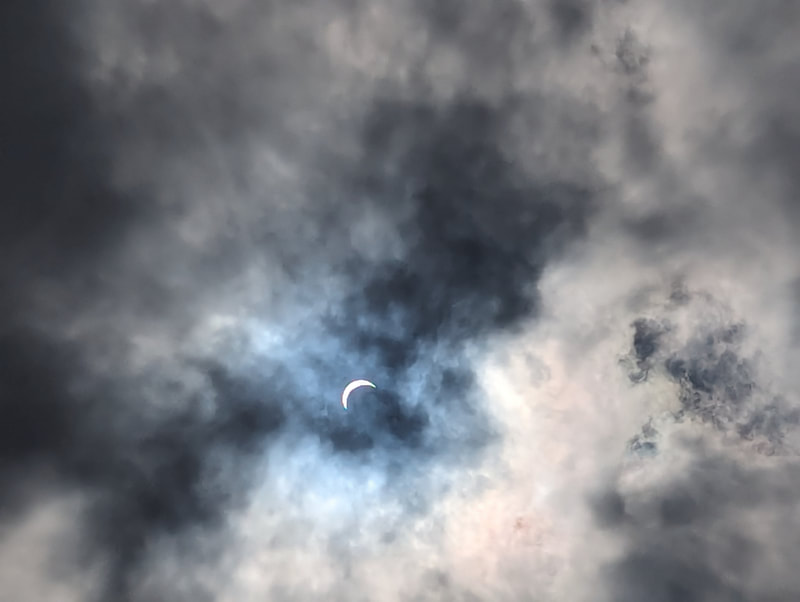
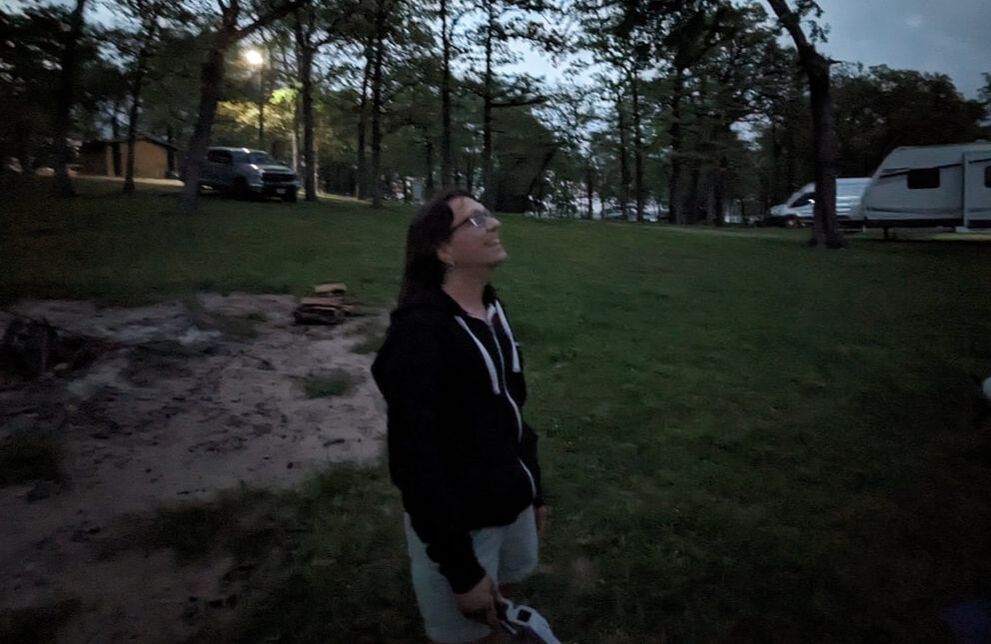
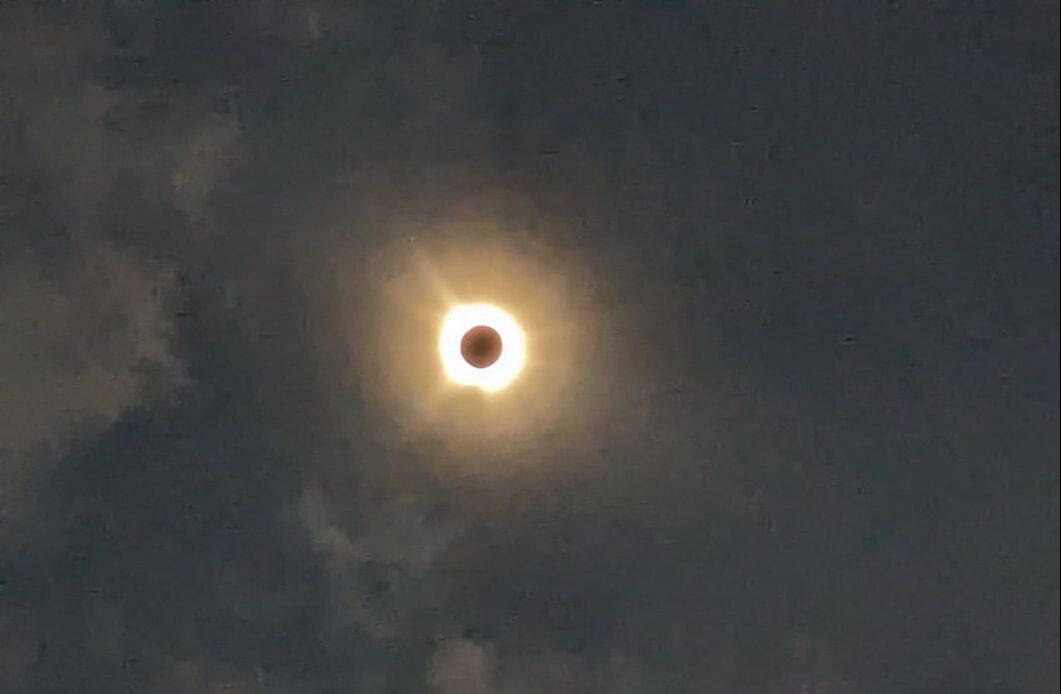
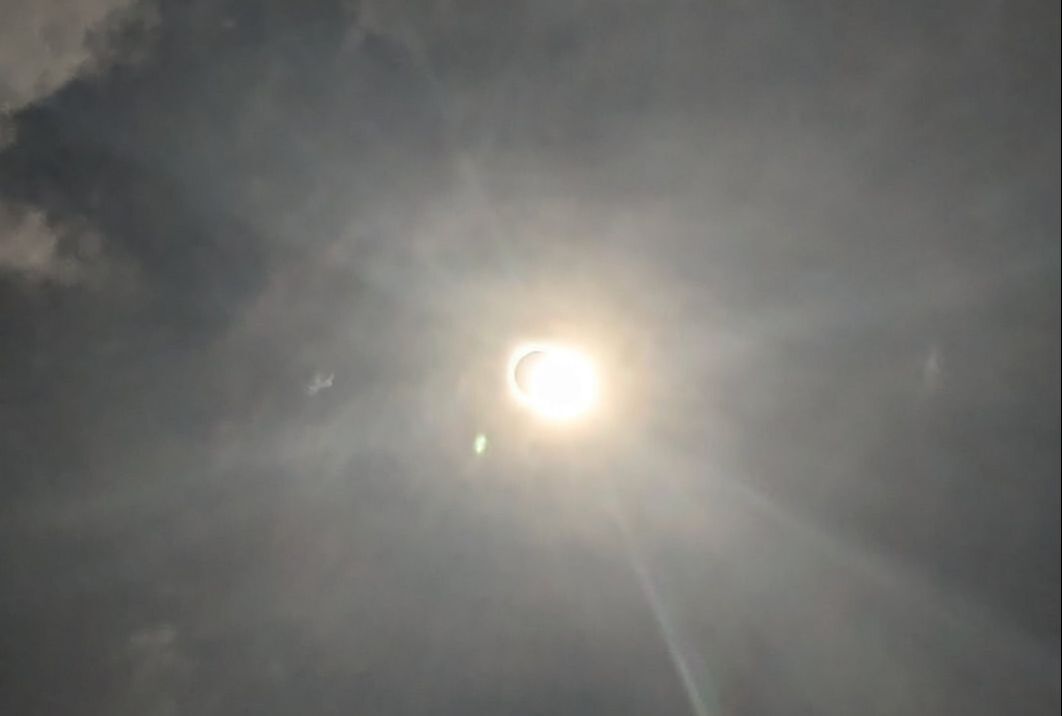
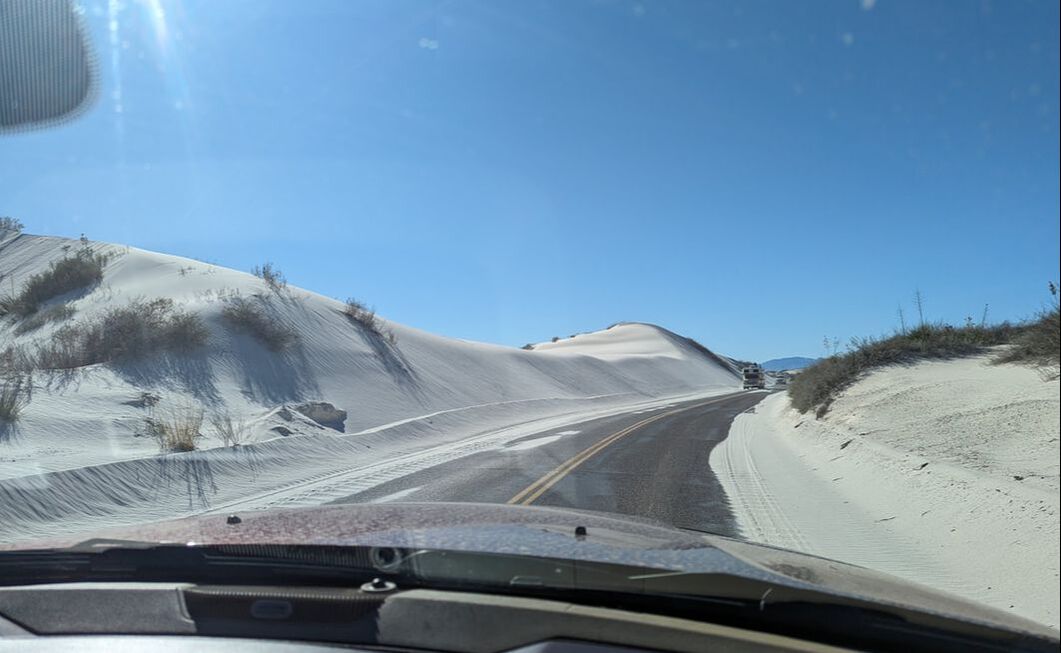
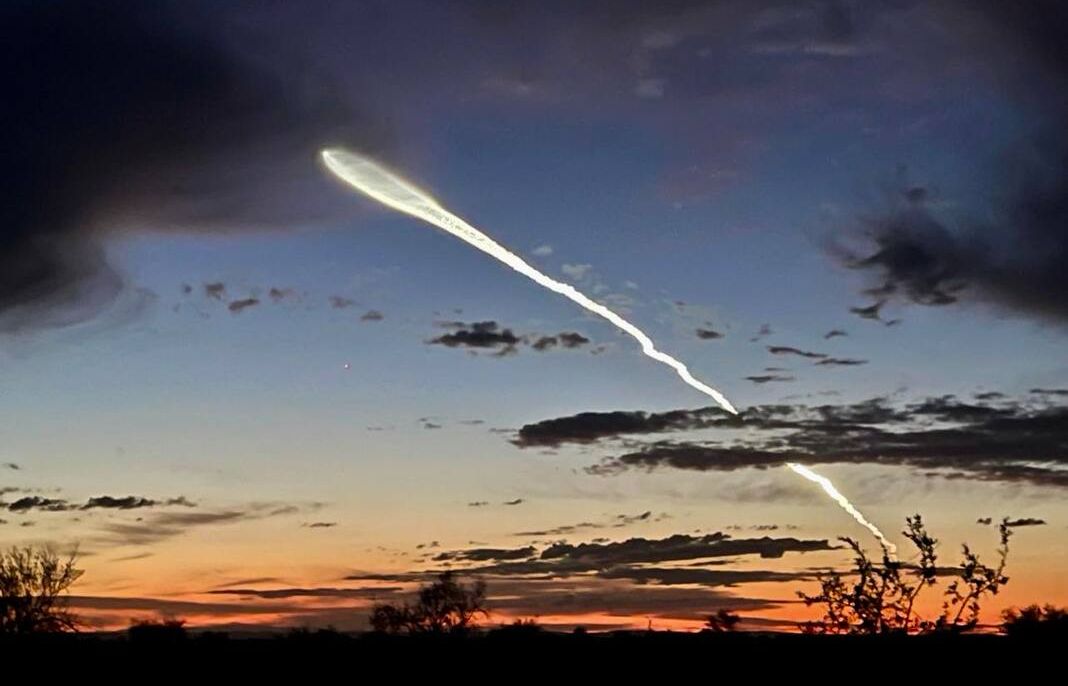


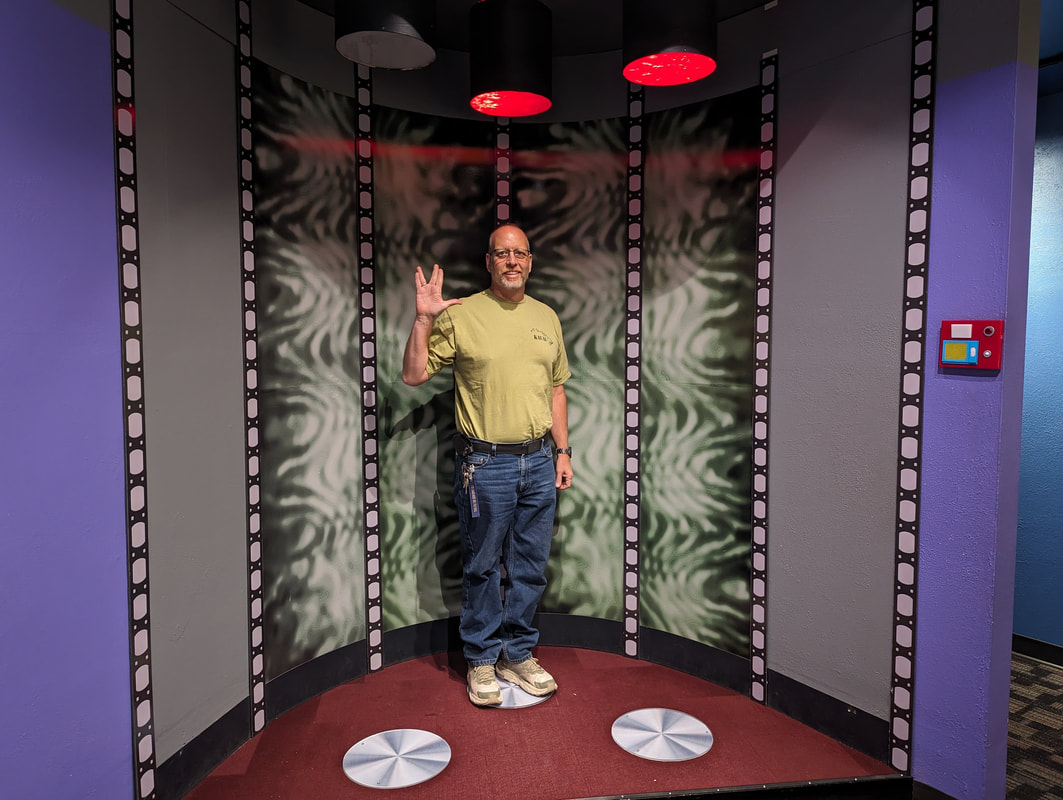
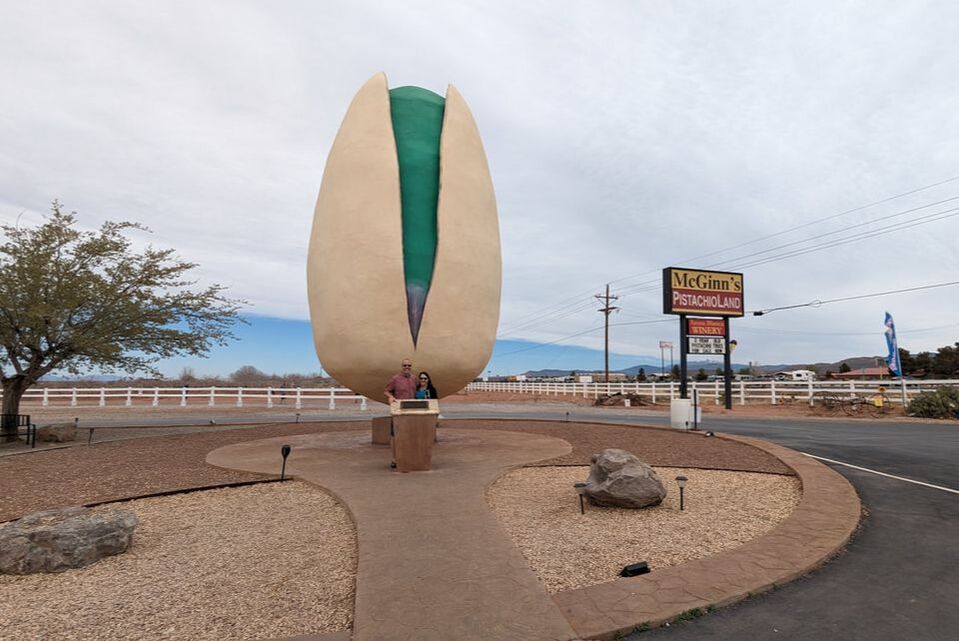
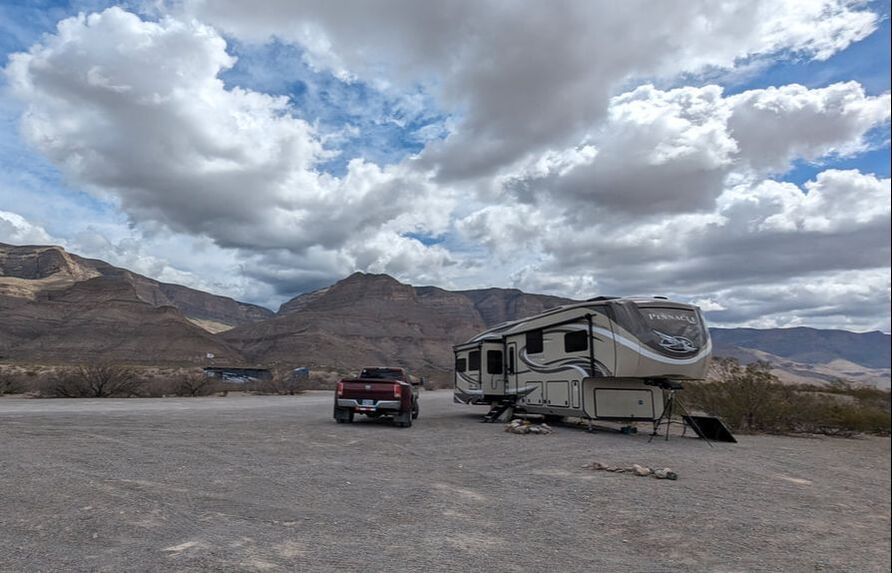
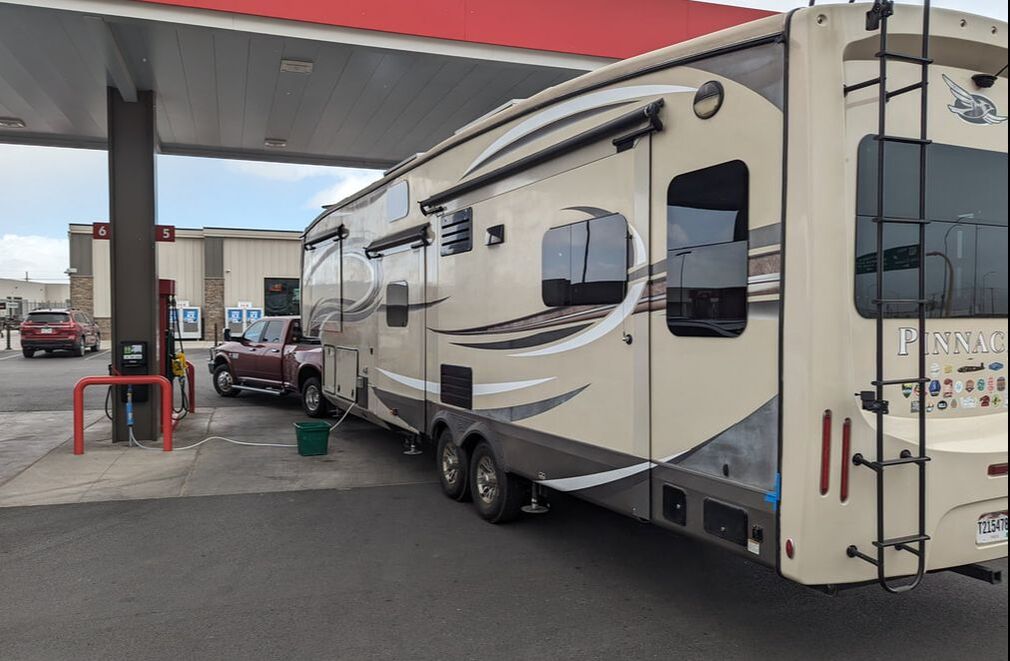
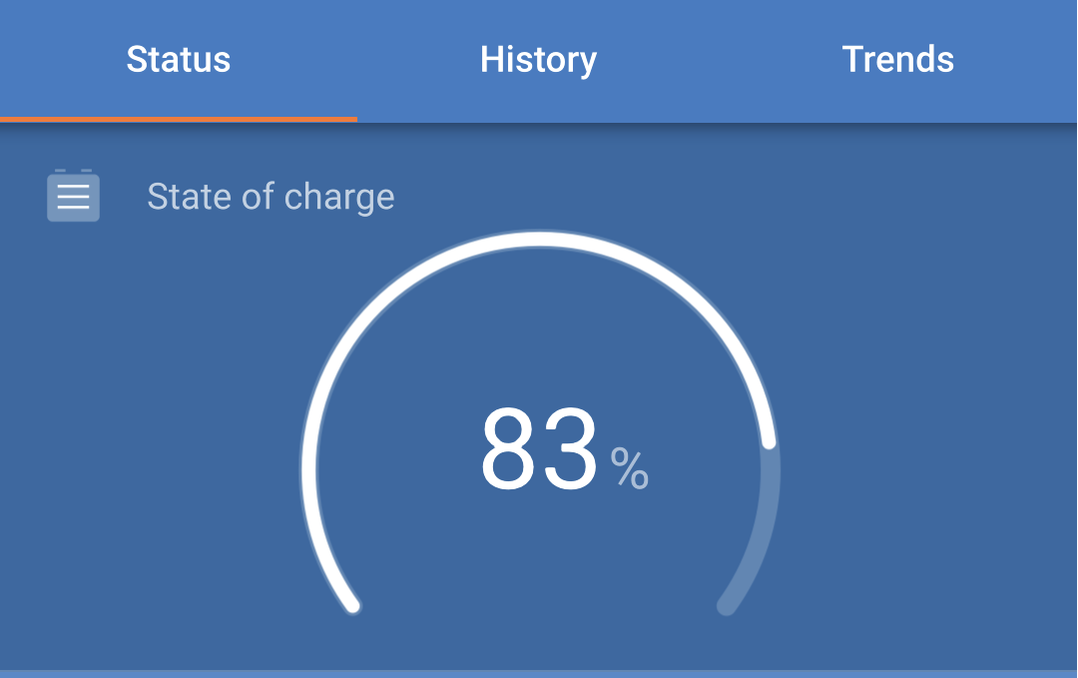
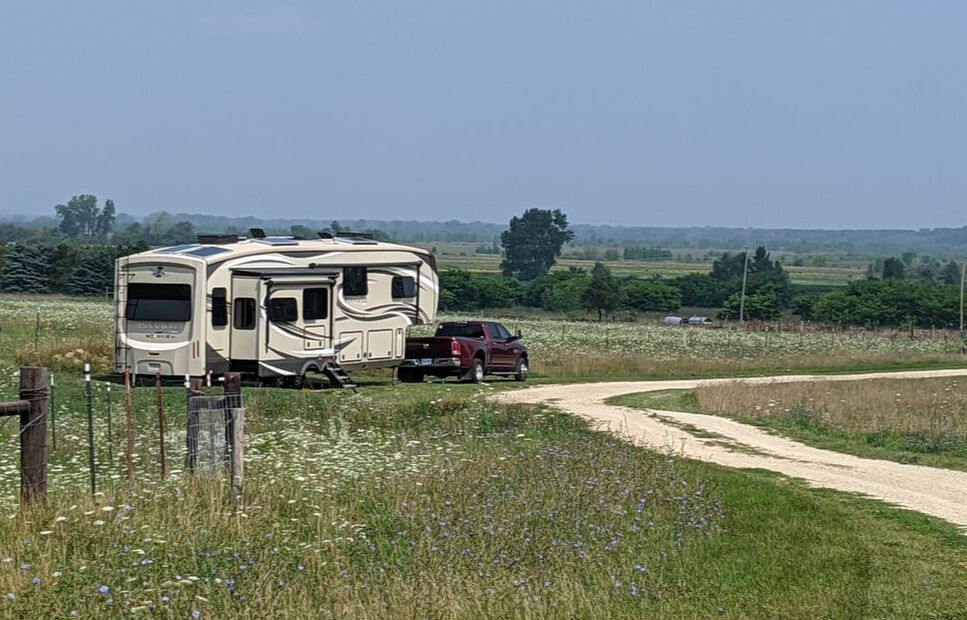
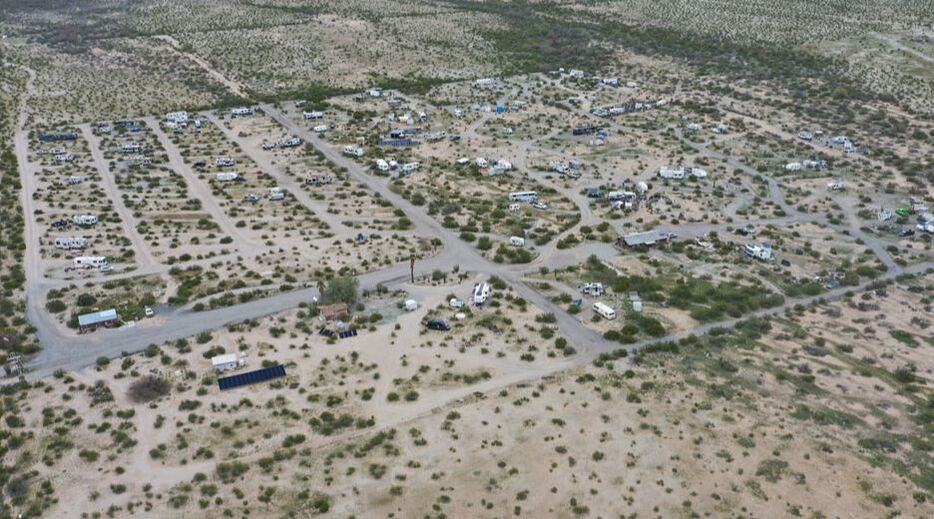

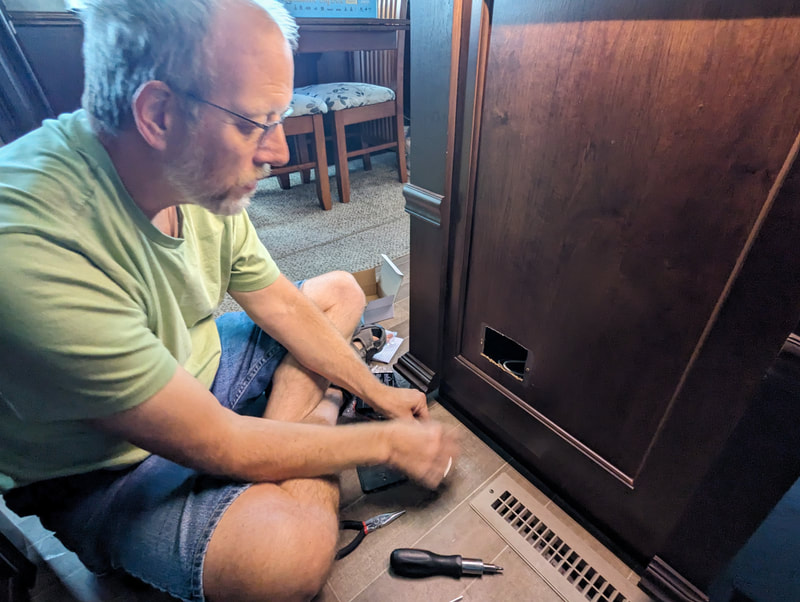
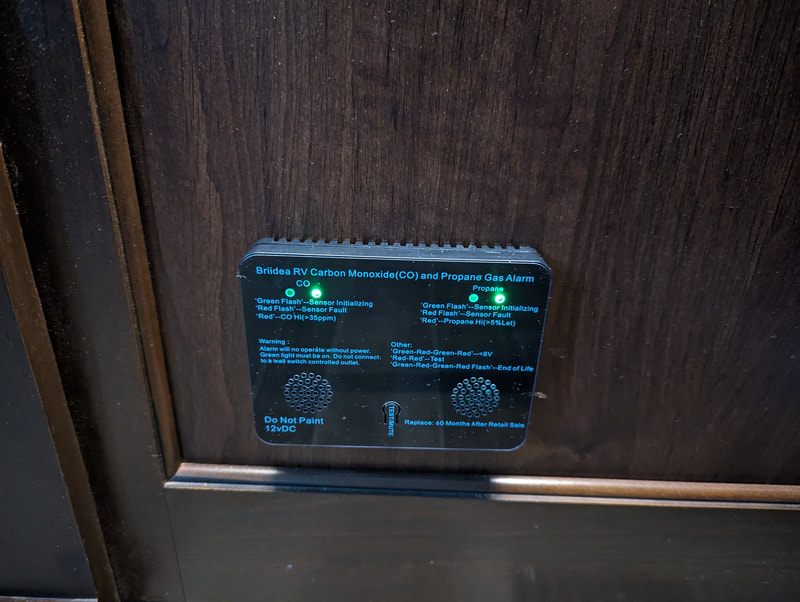
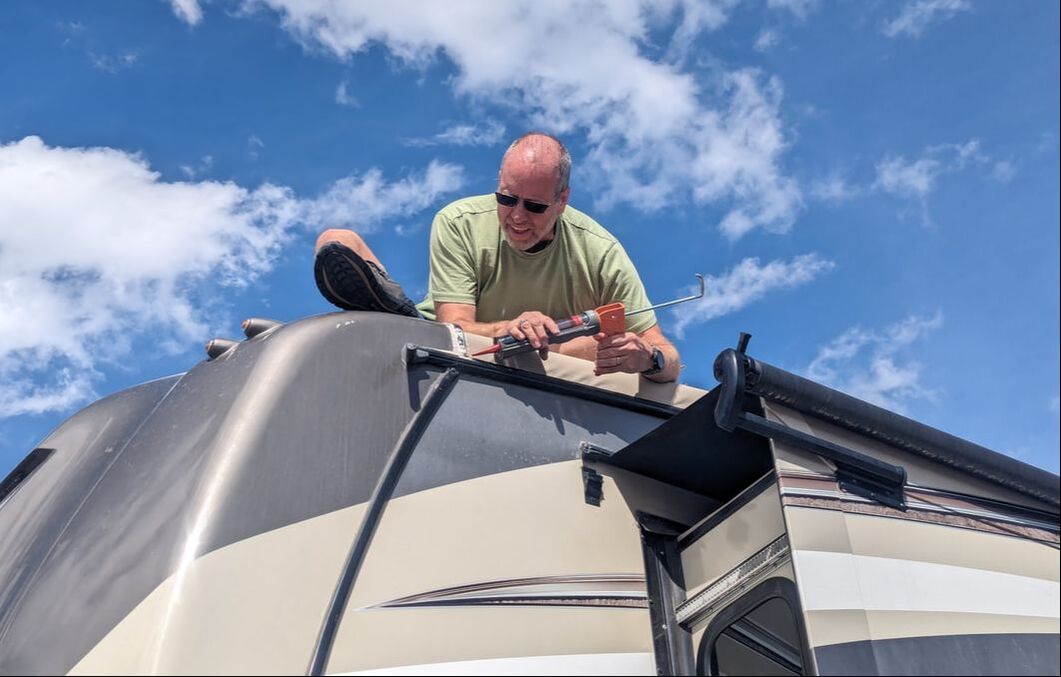
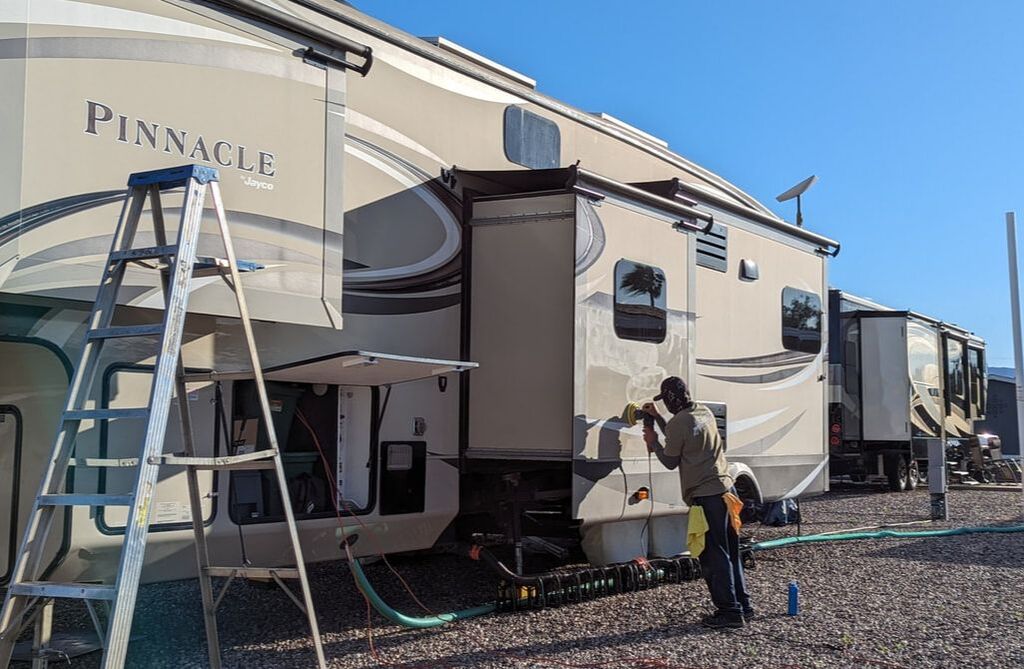
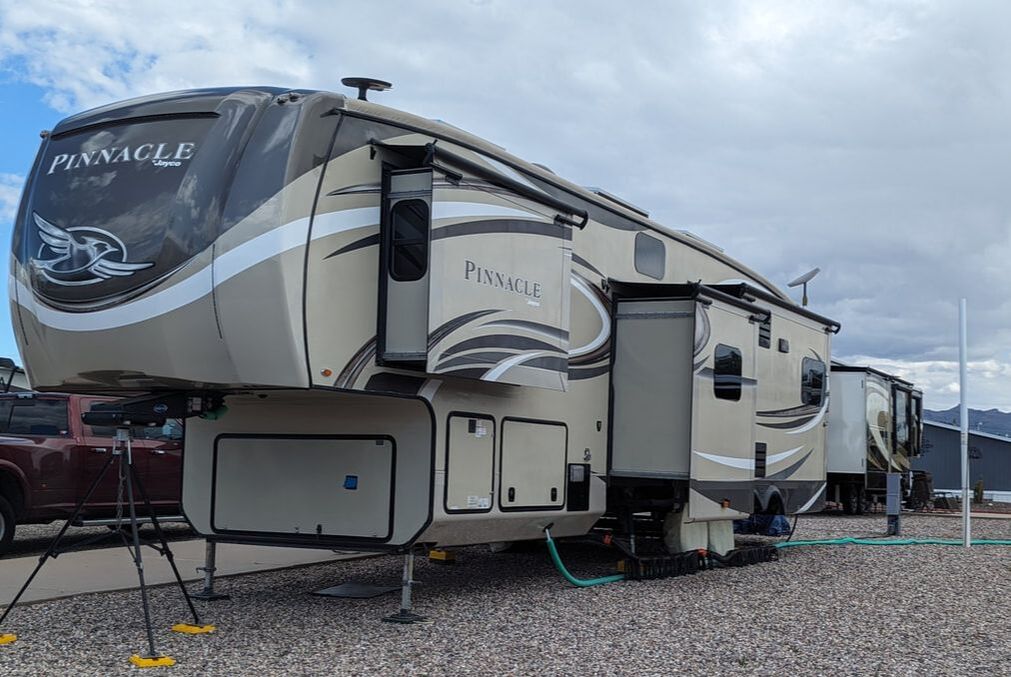
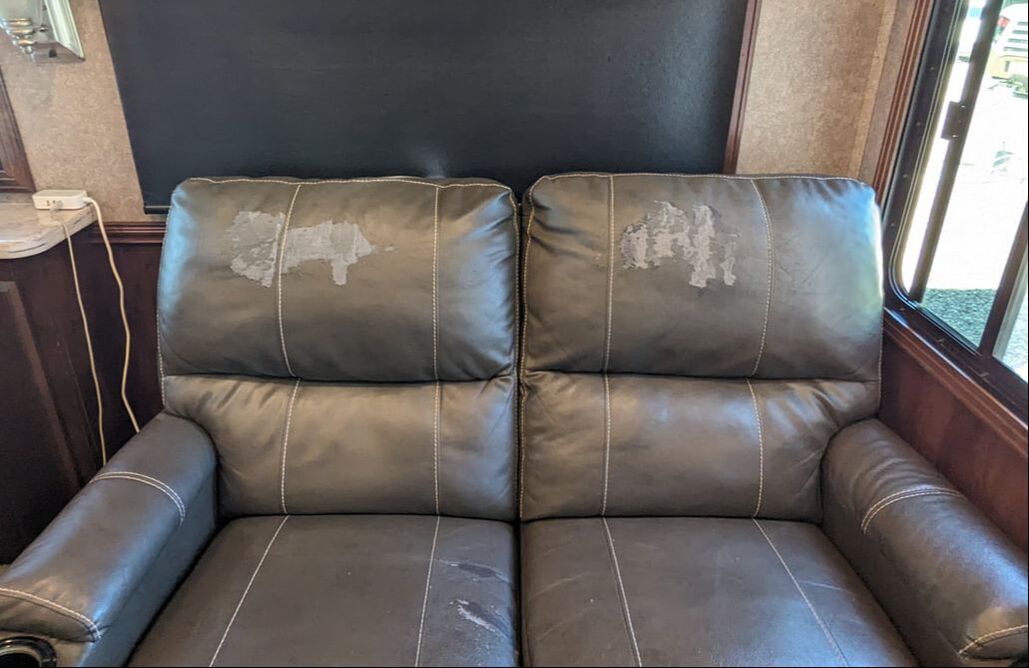
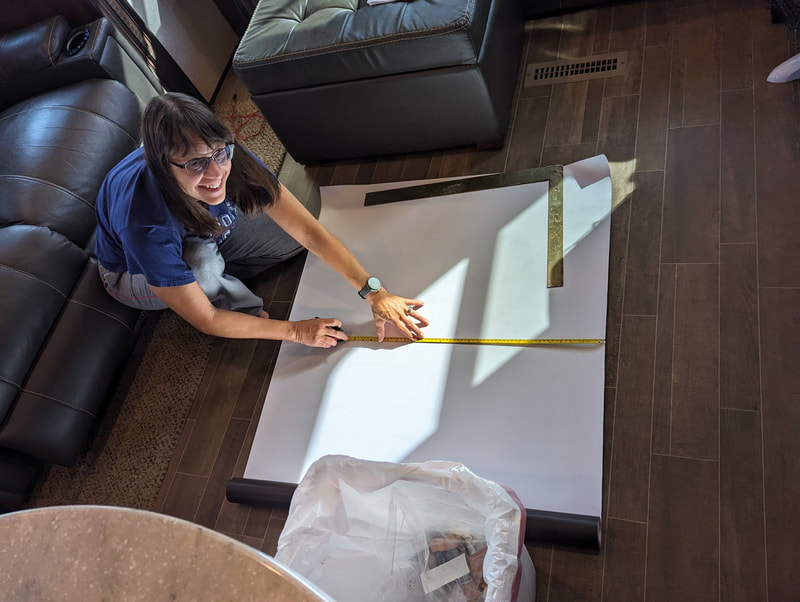
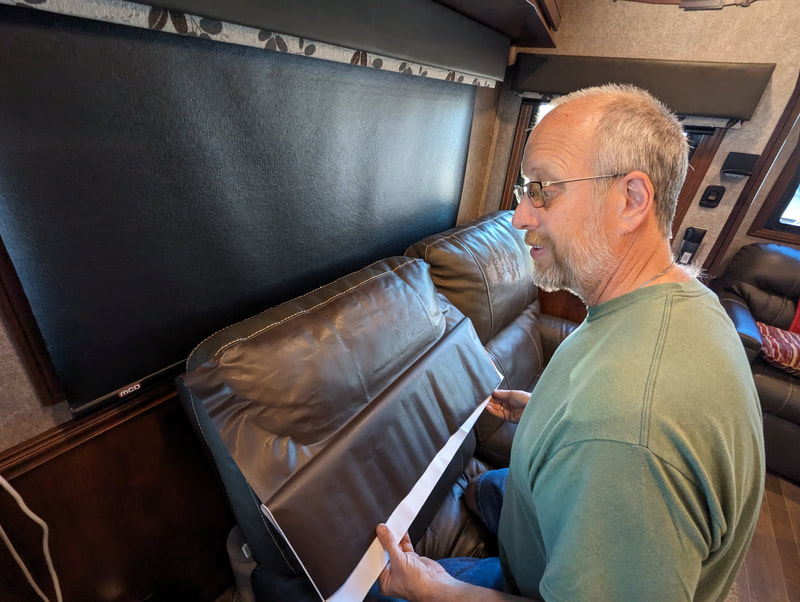
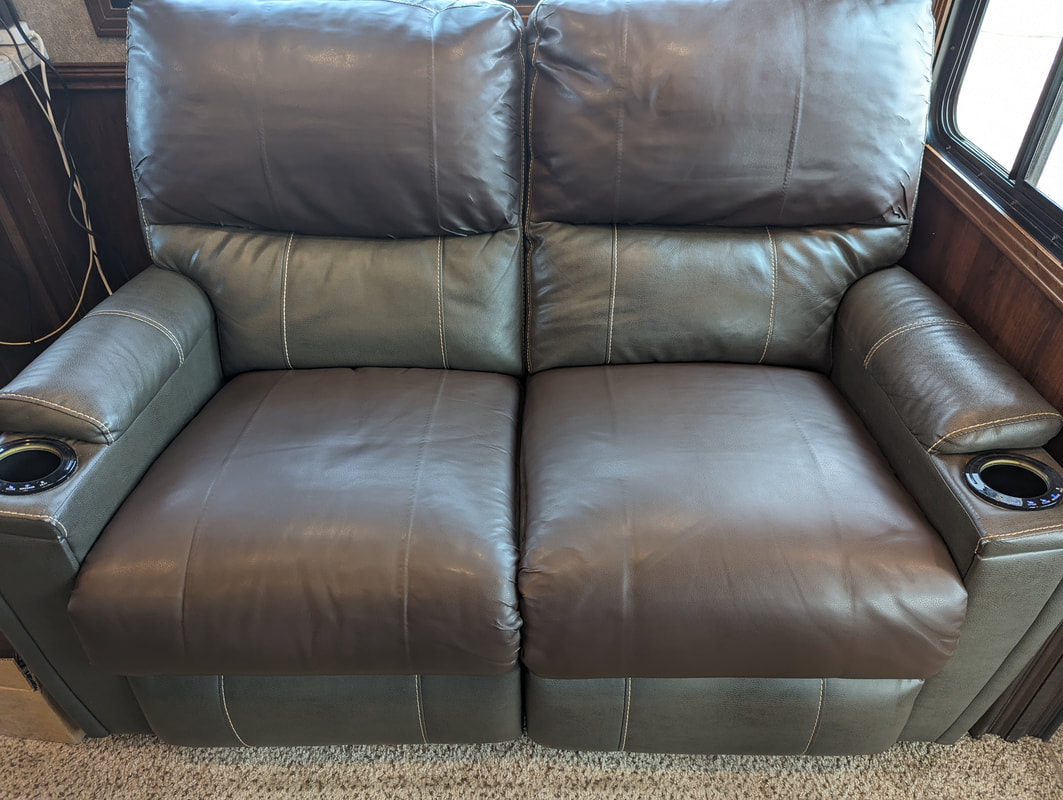
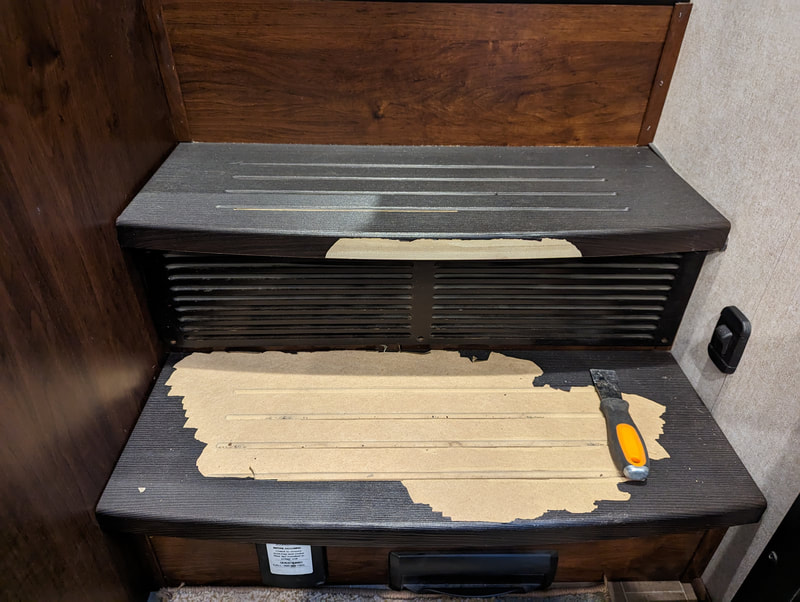
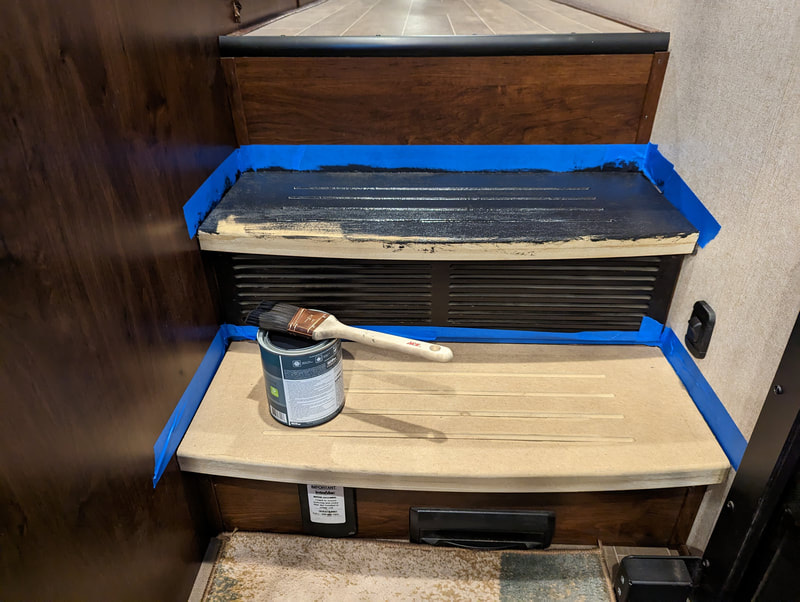
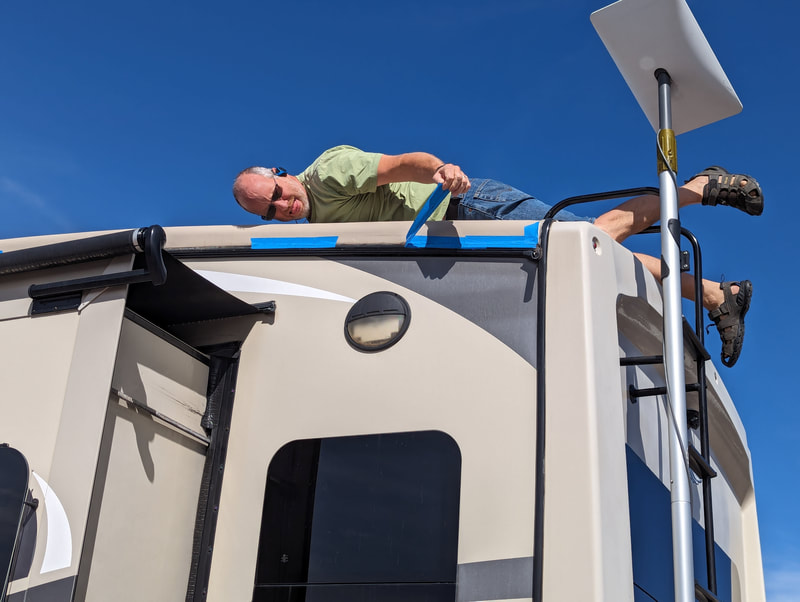
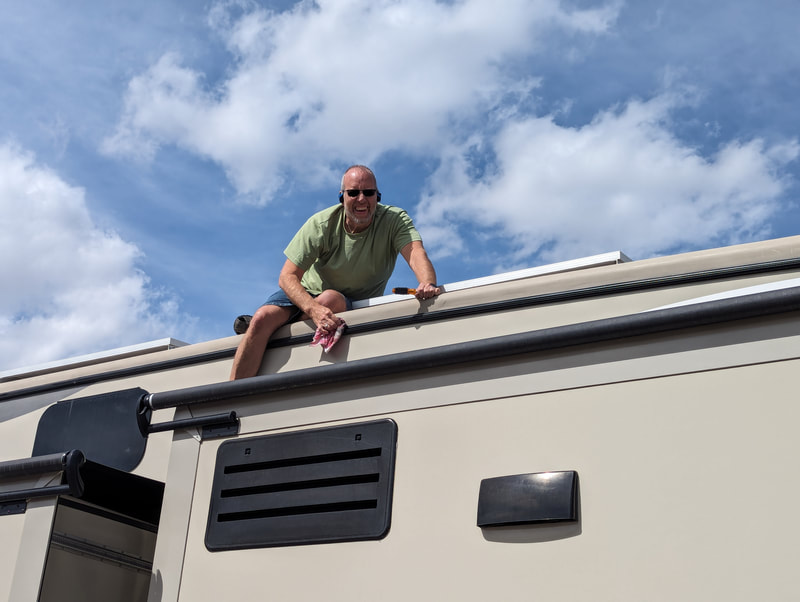
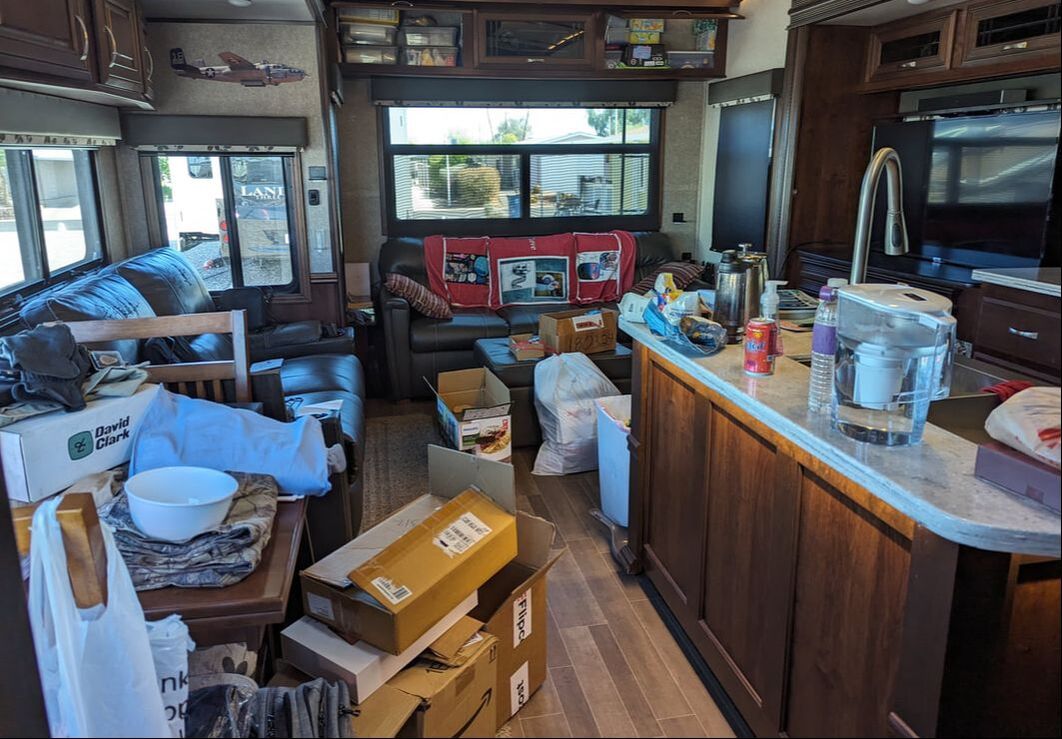
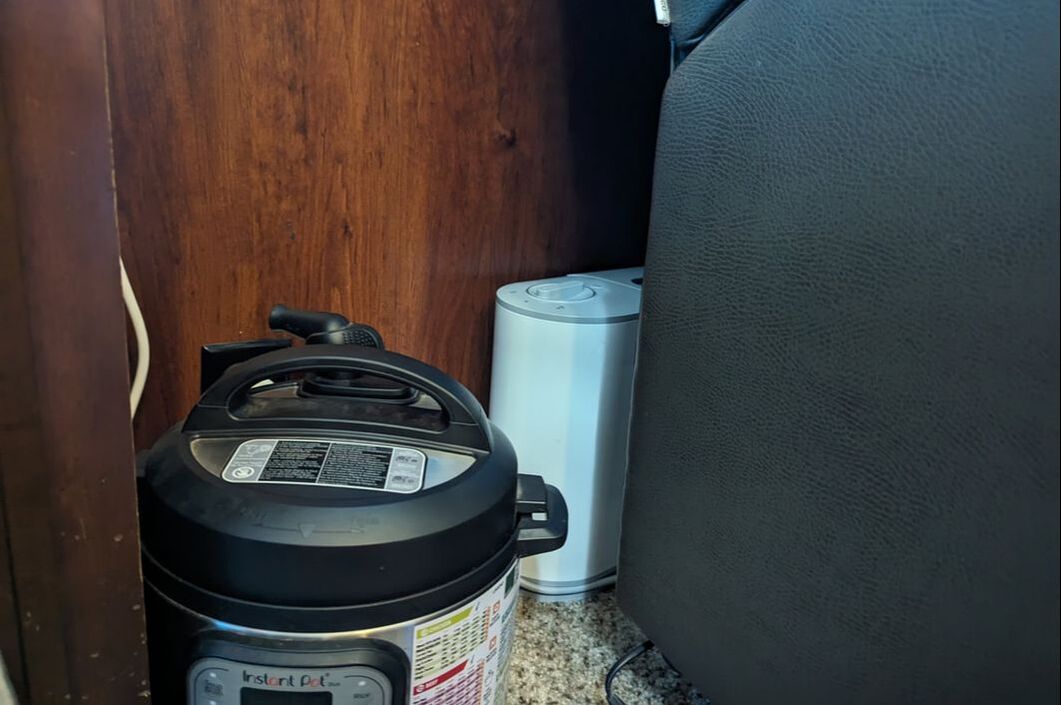
 RSS Feed
RSS Feed